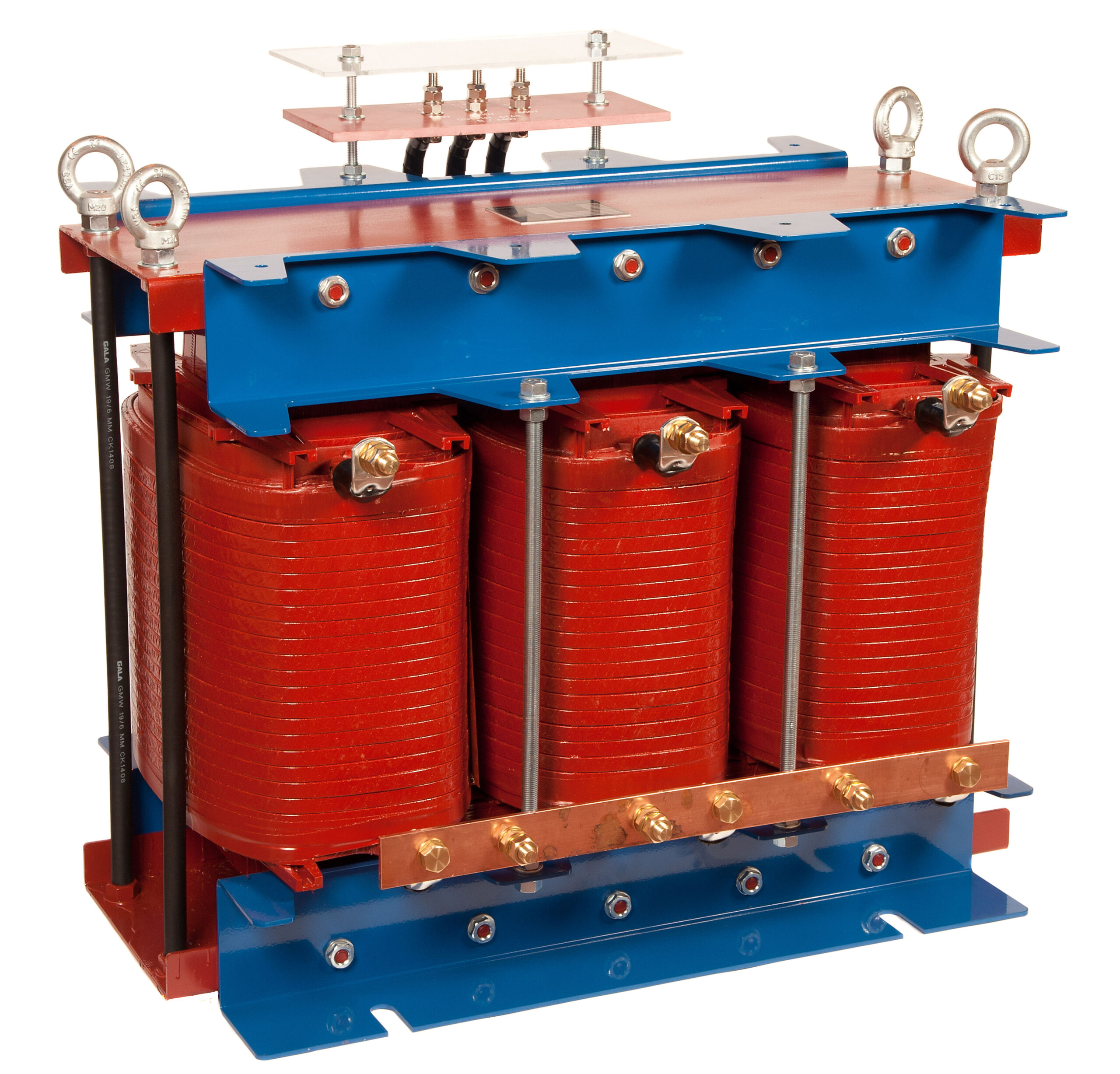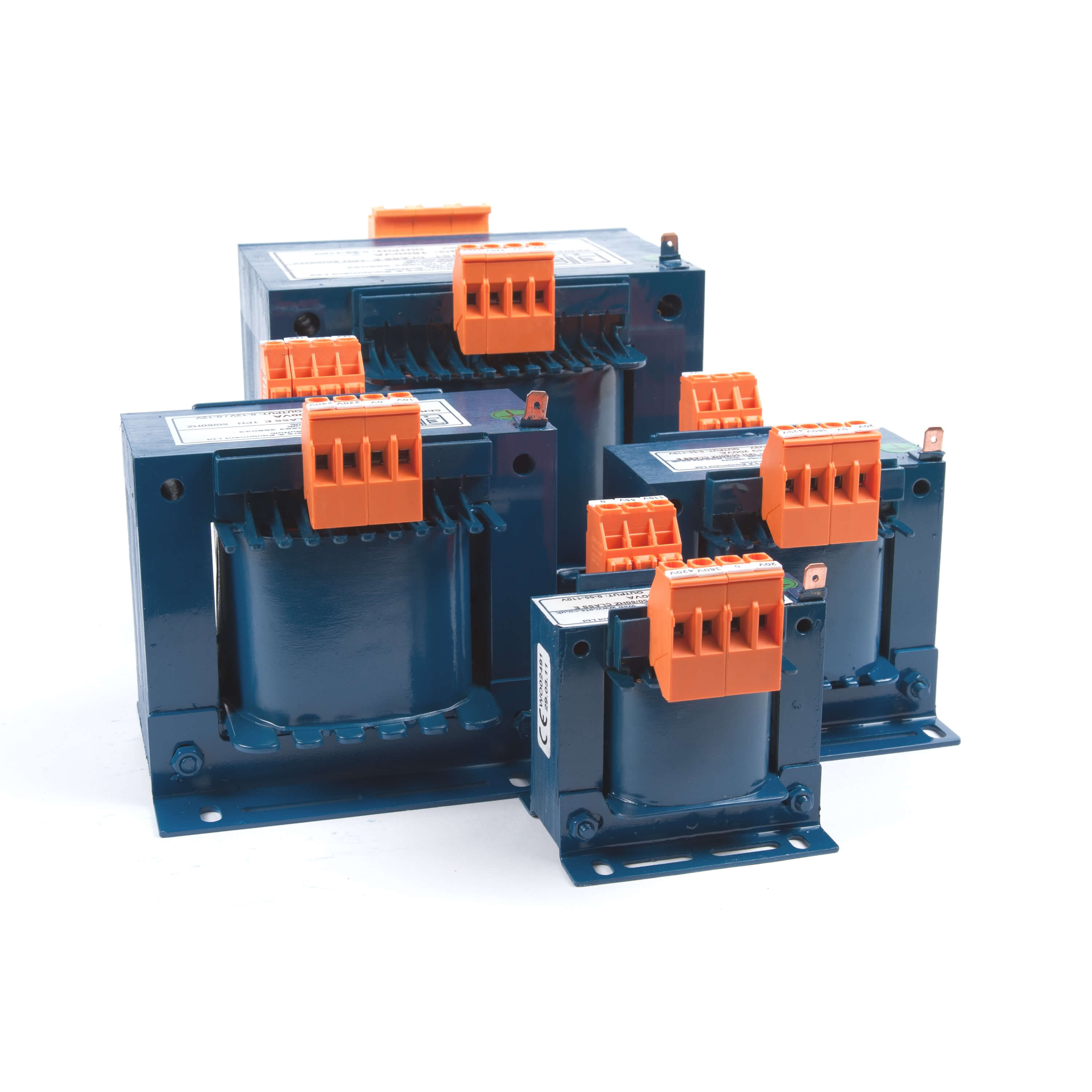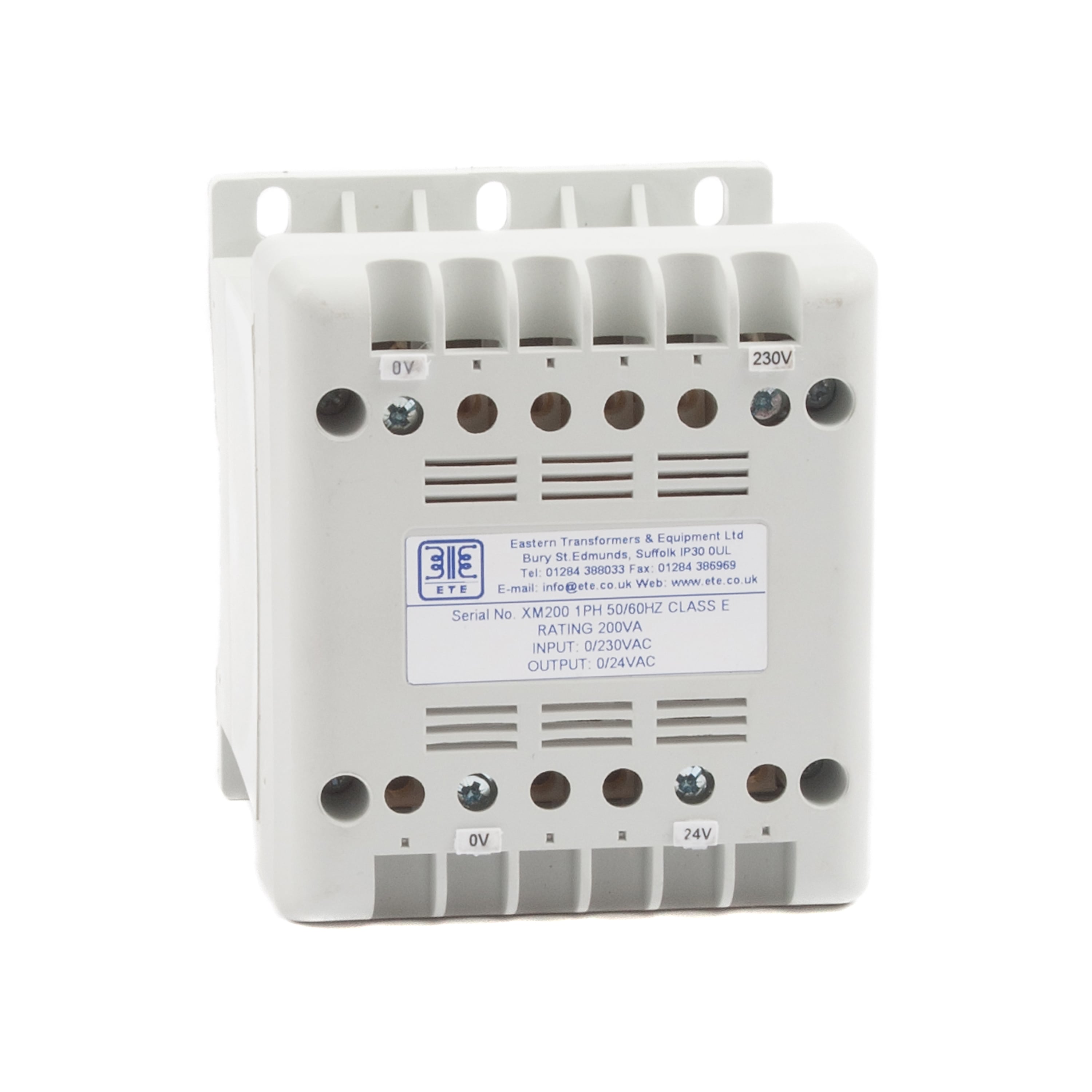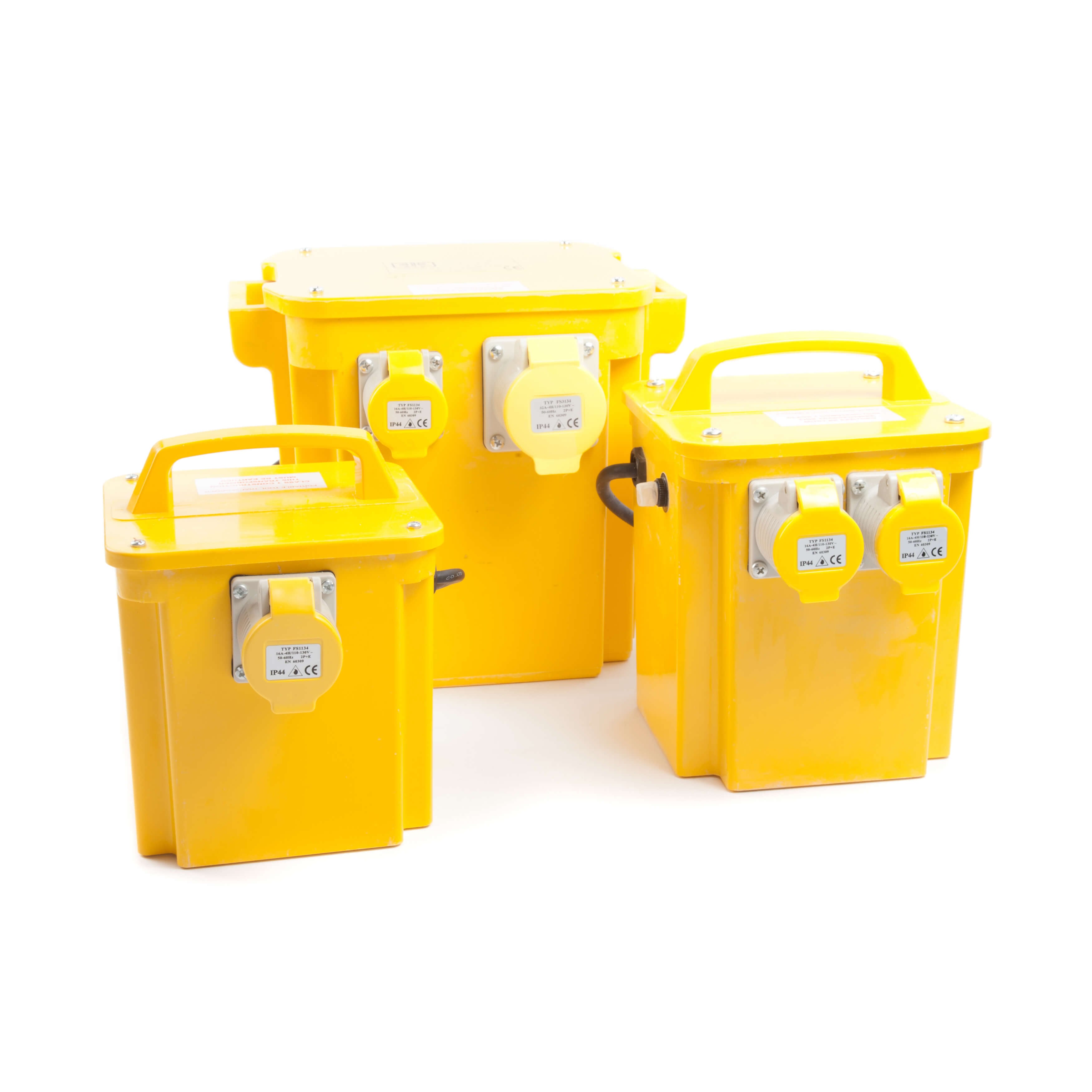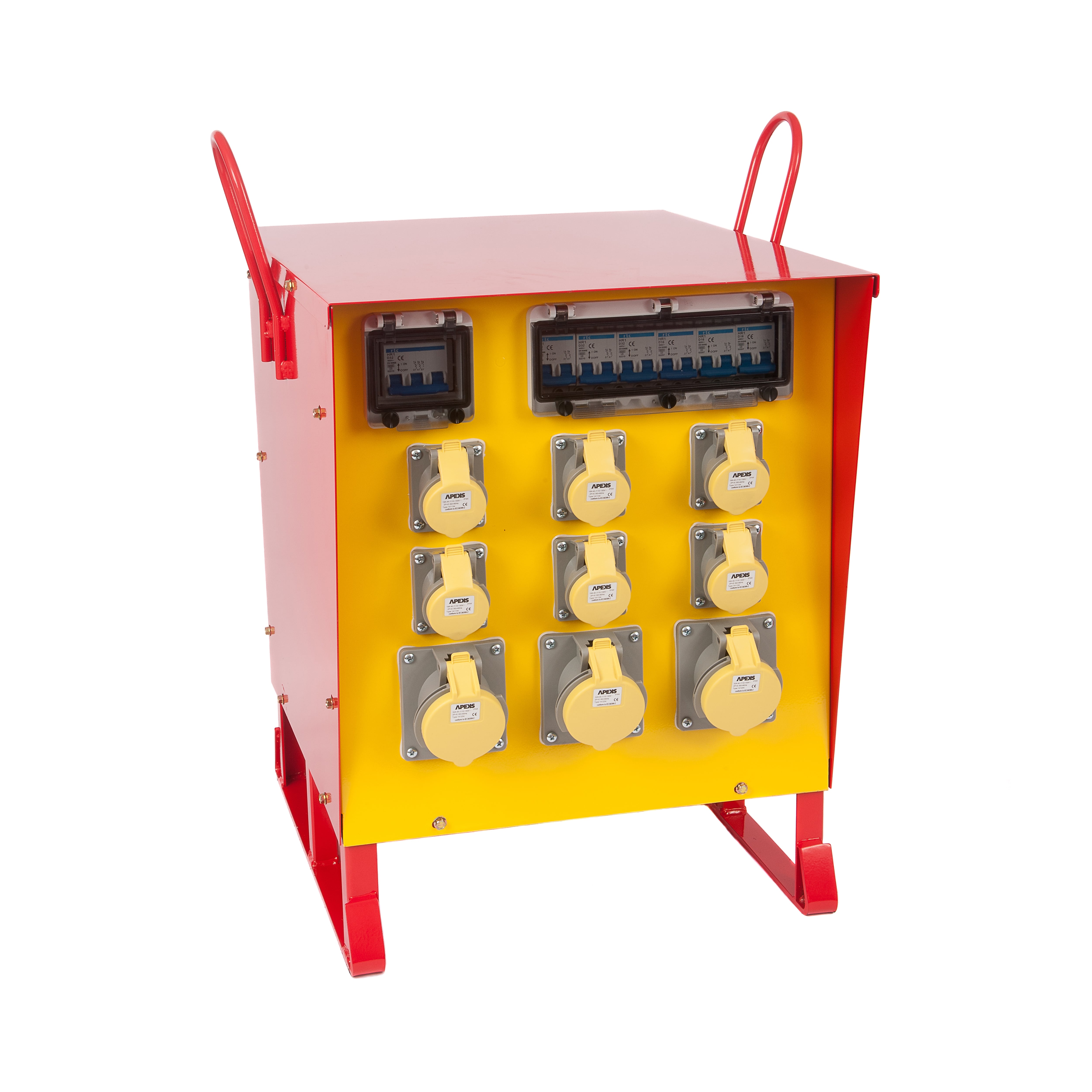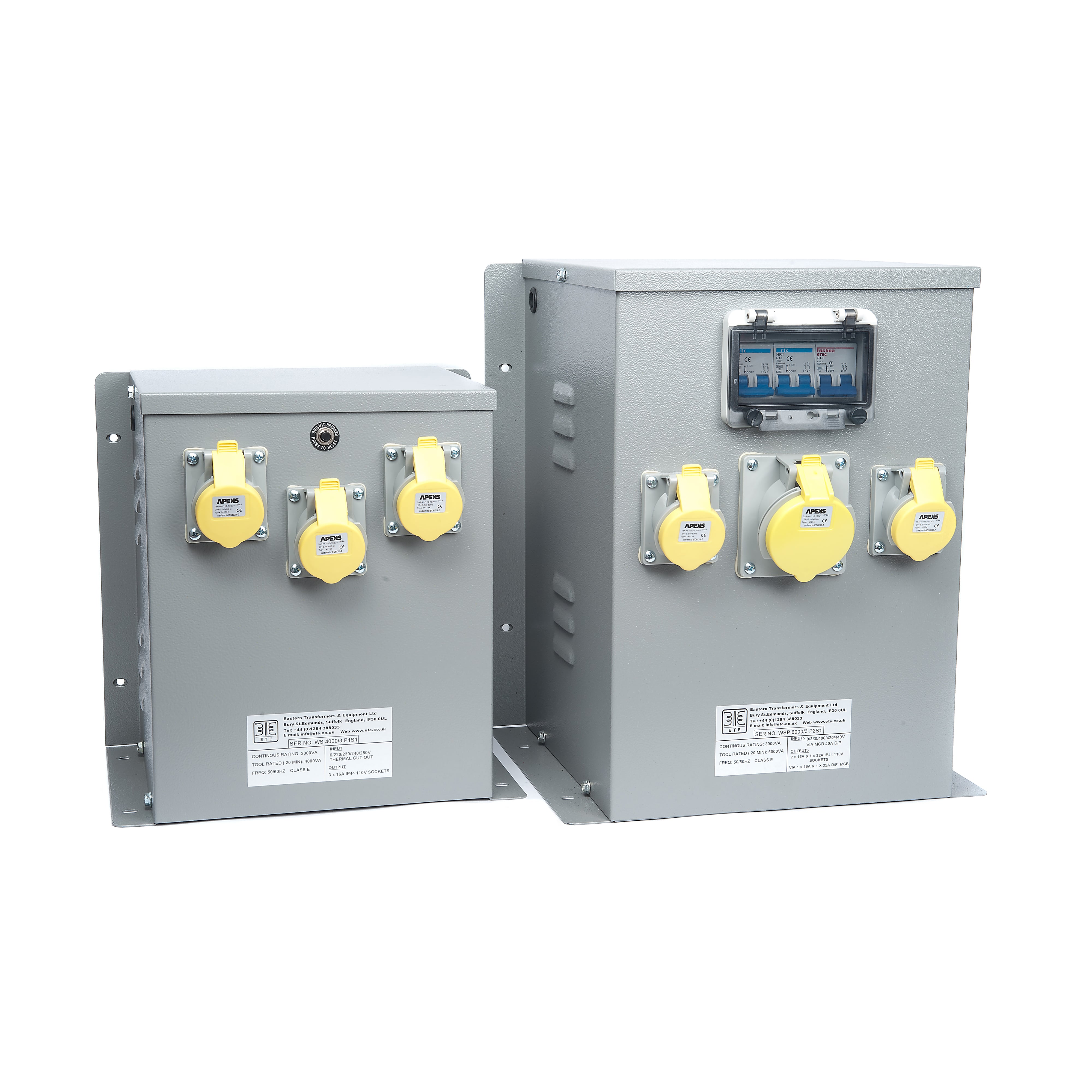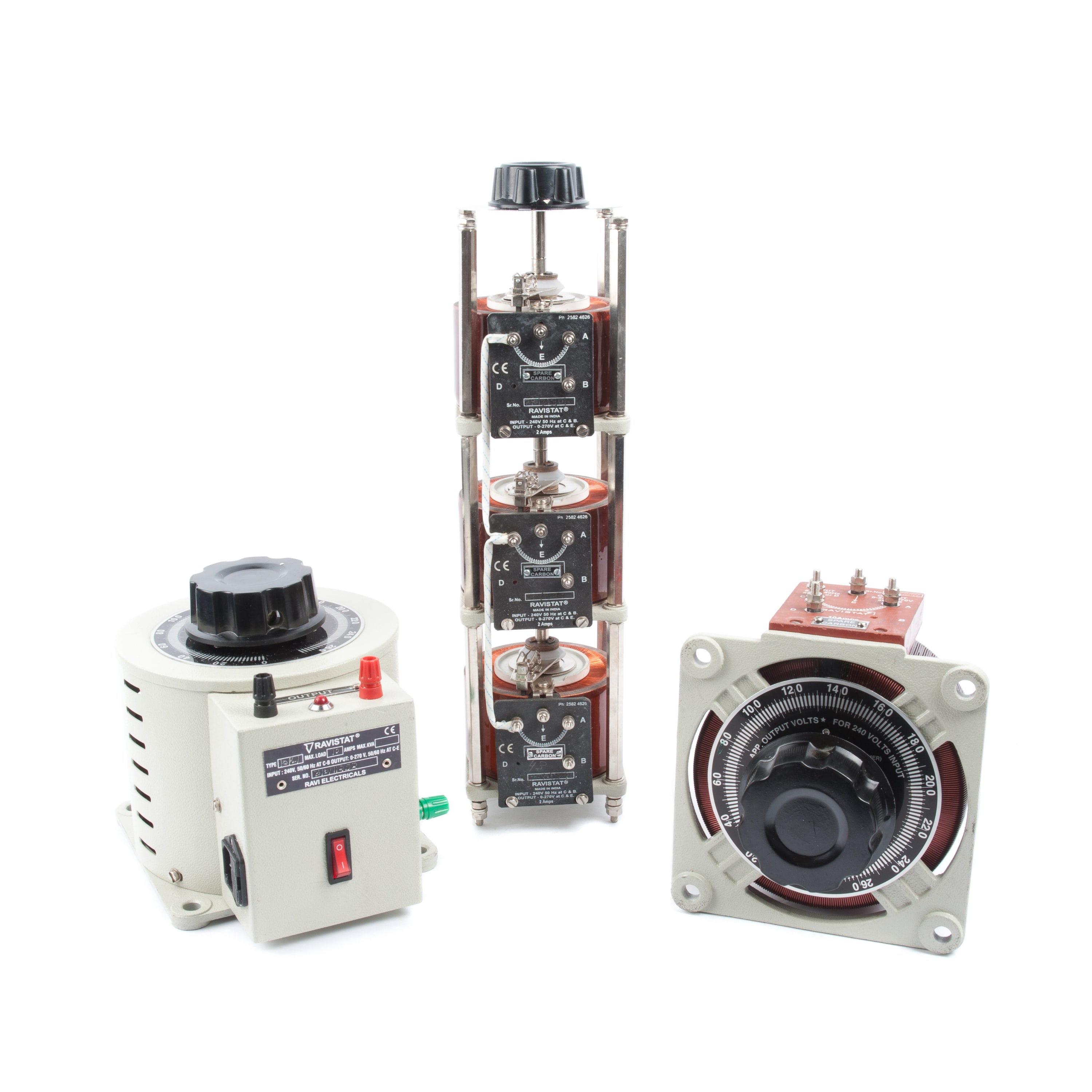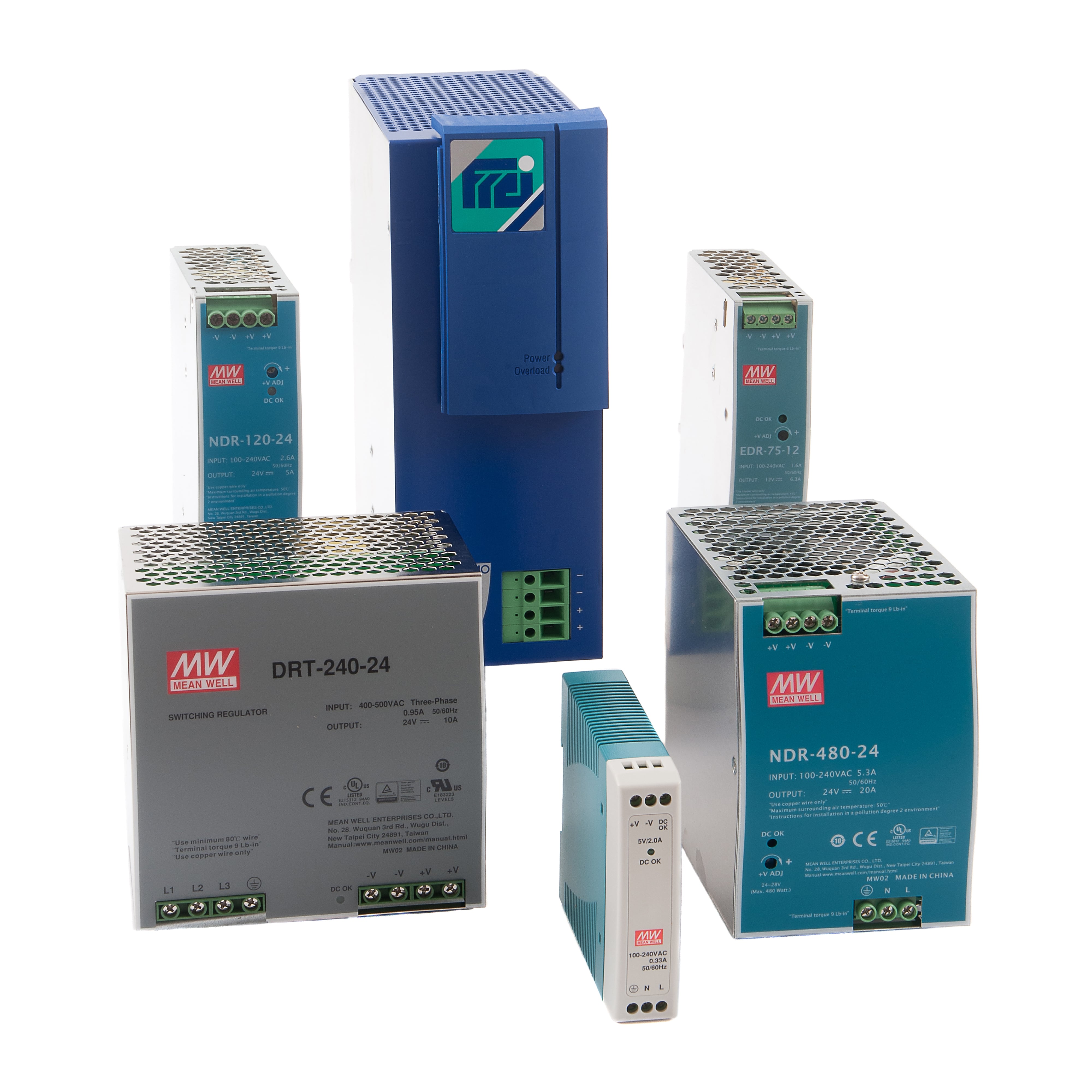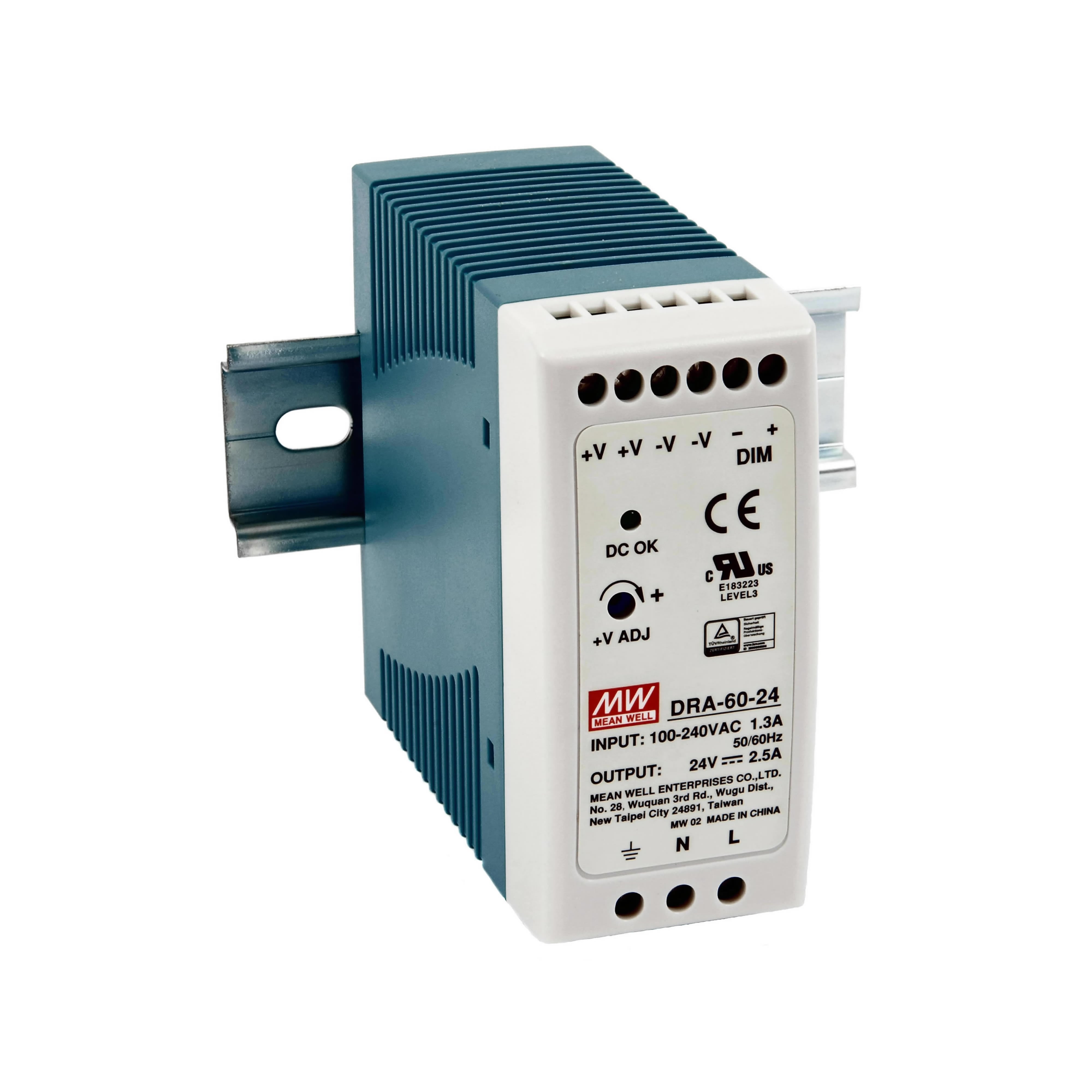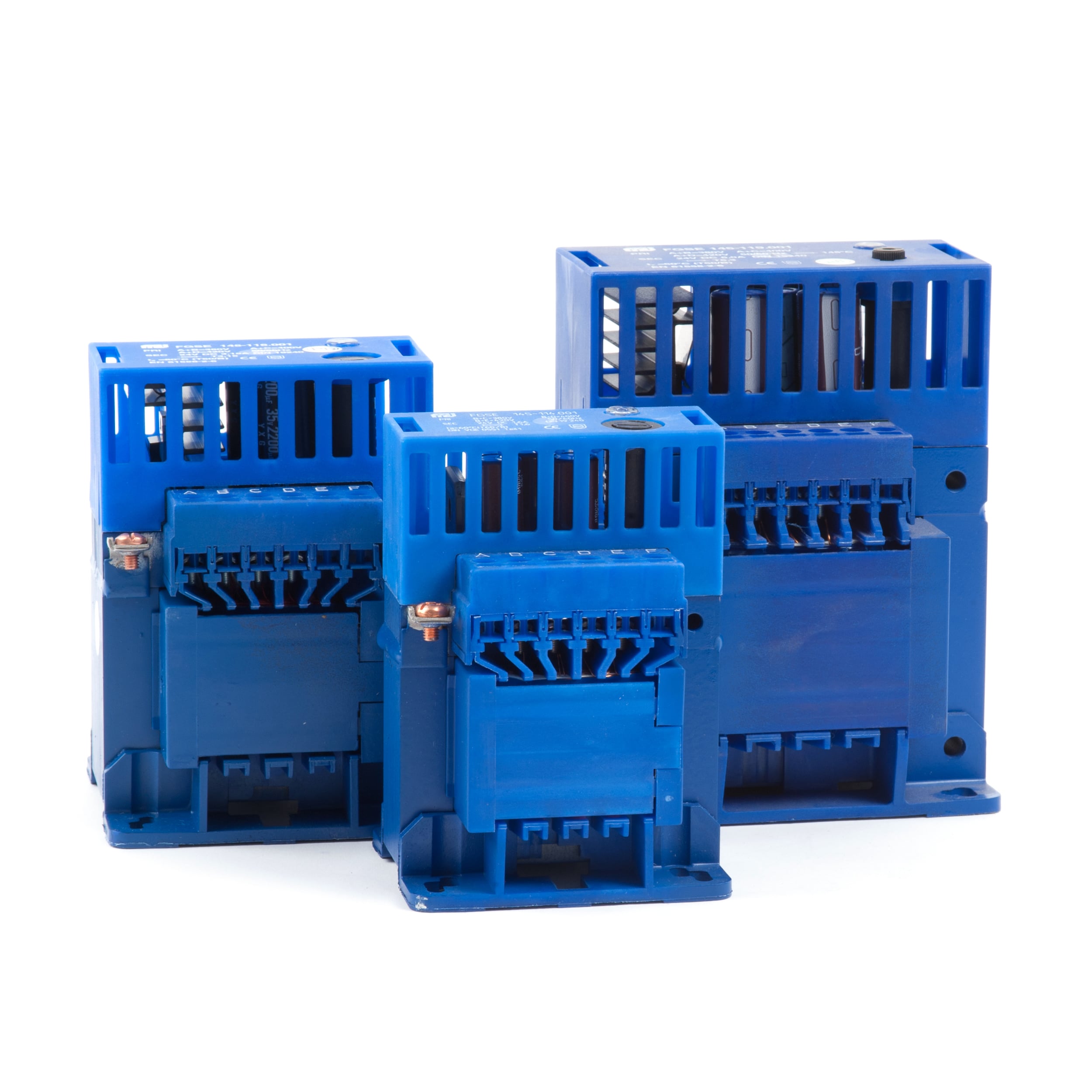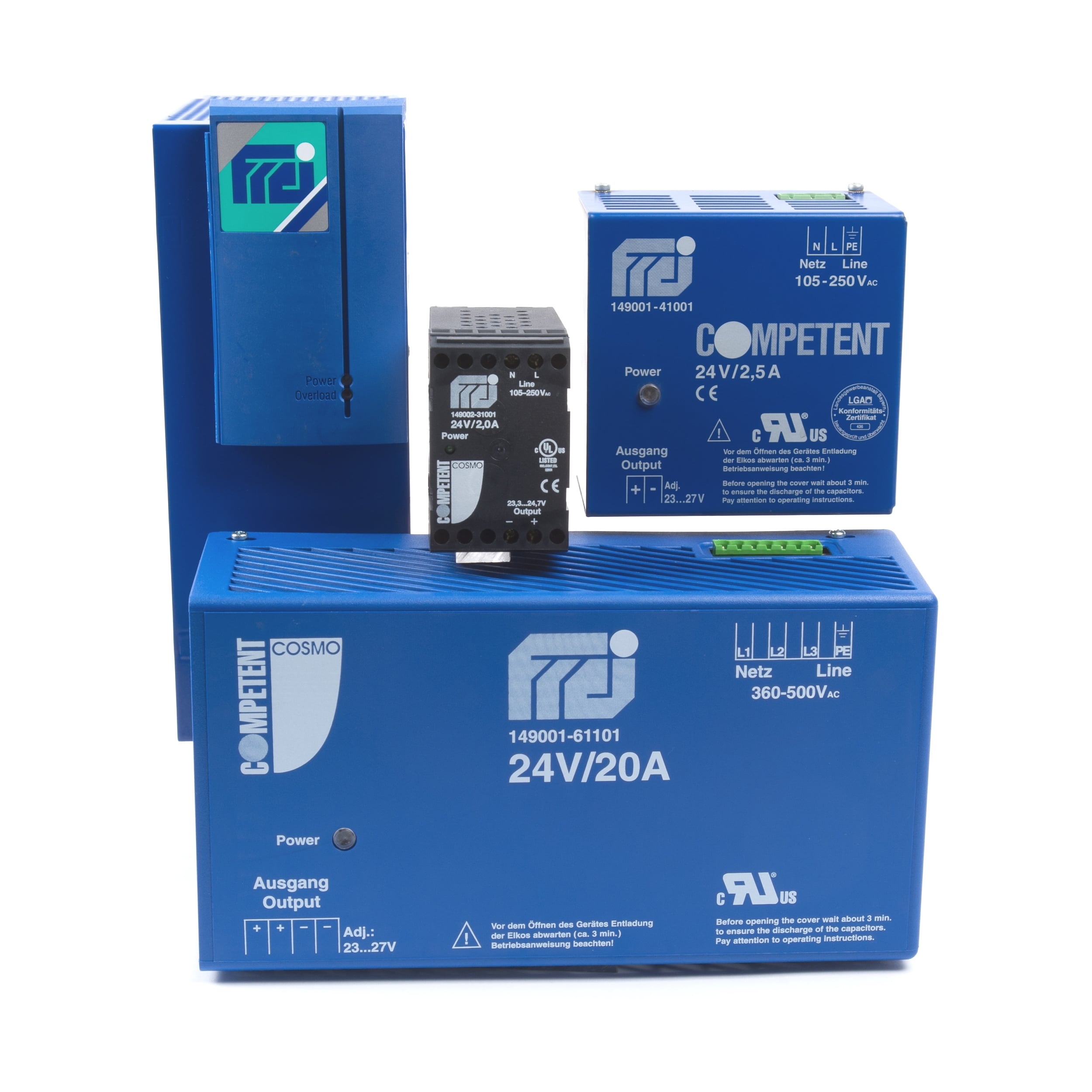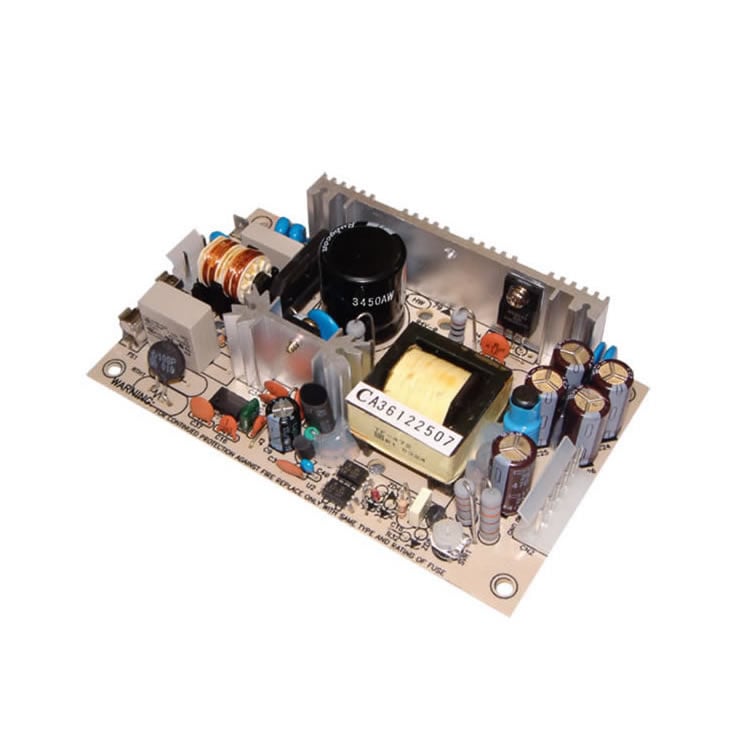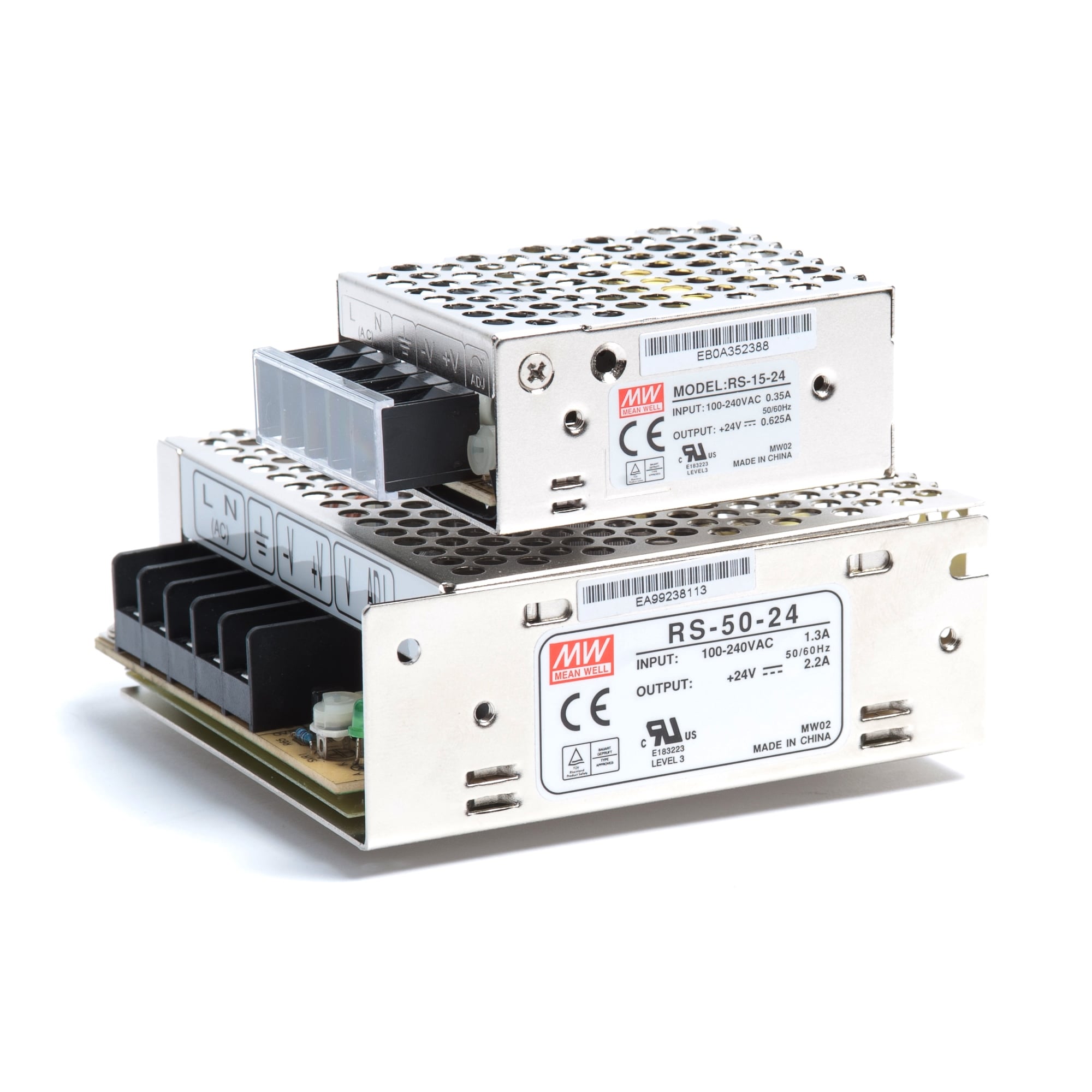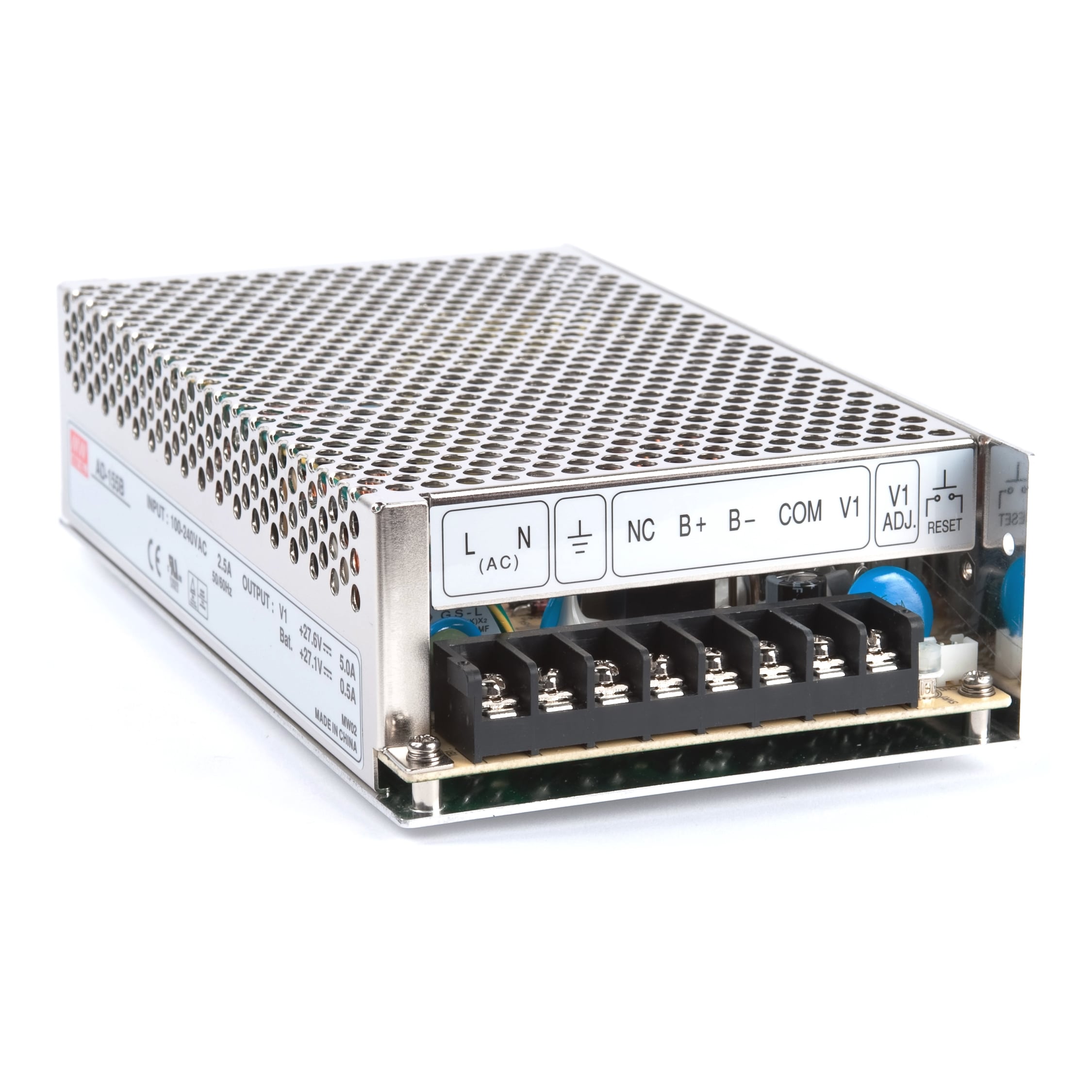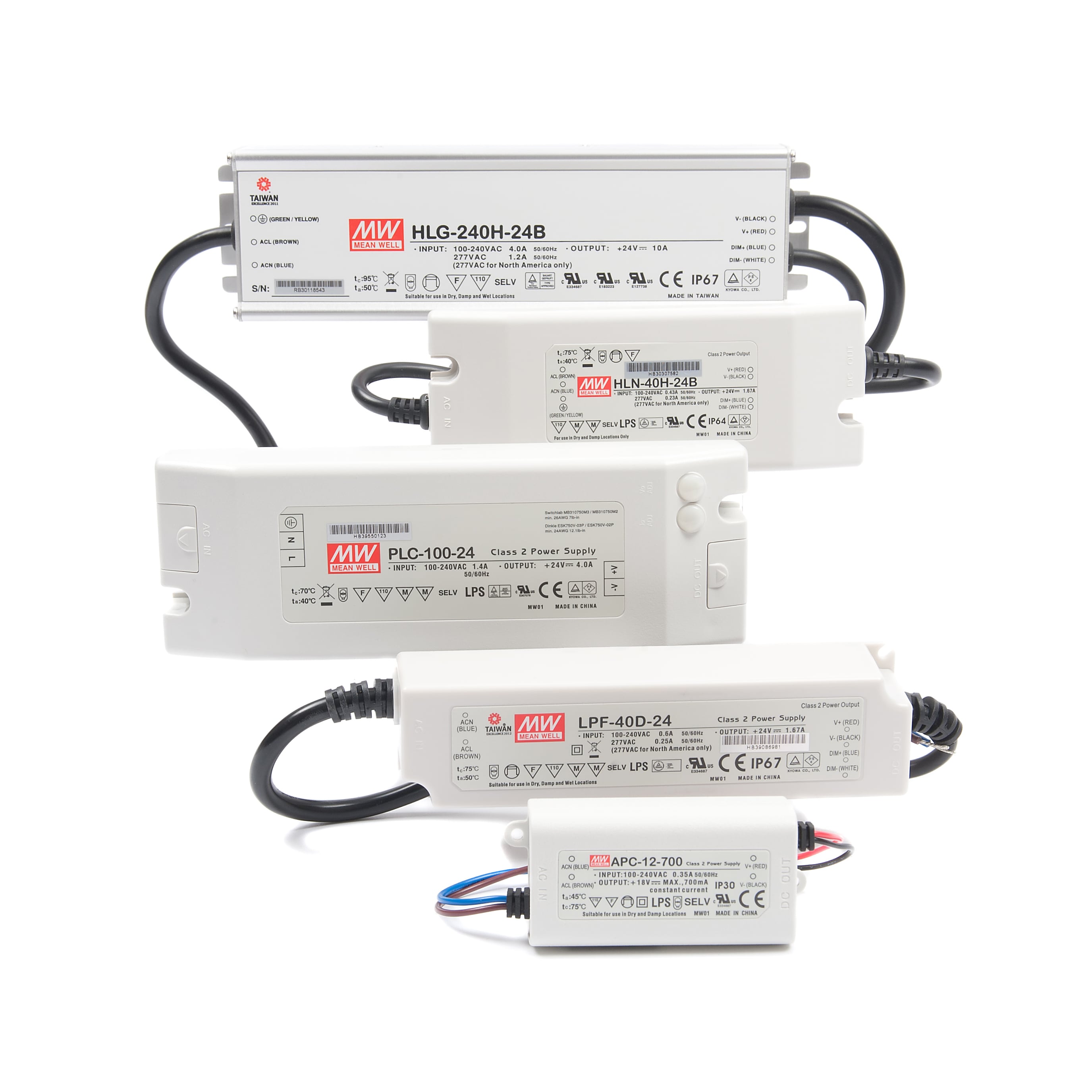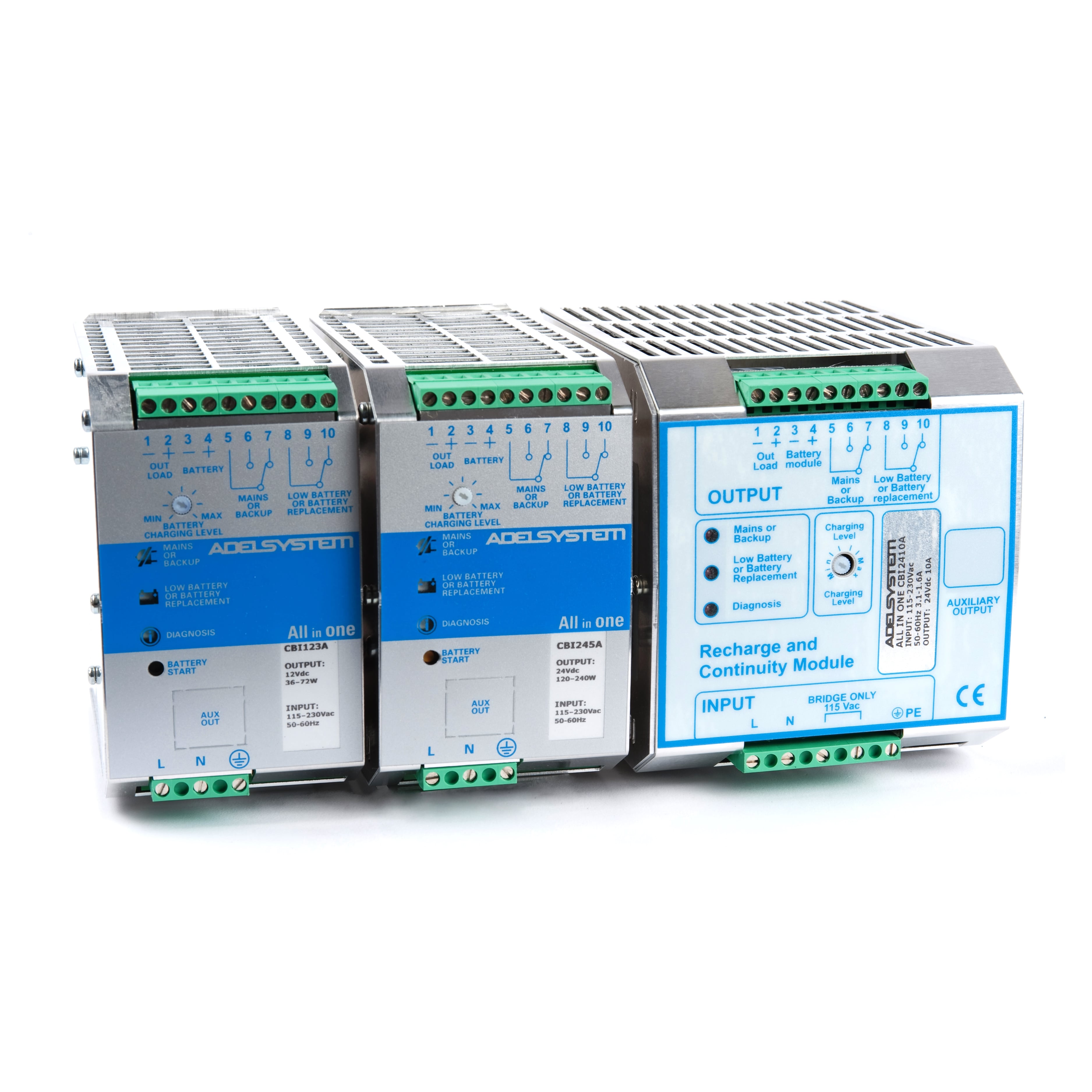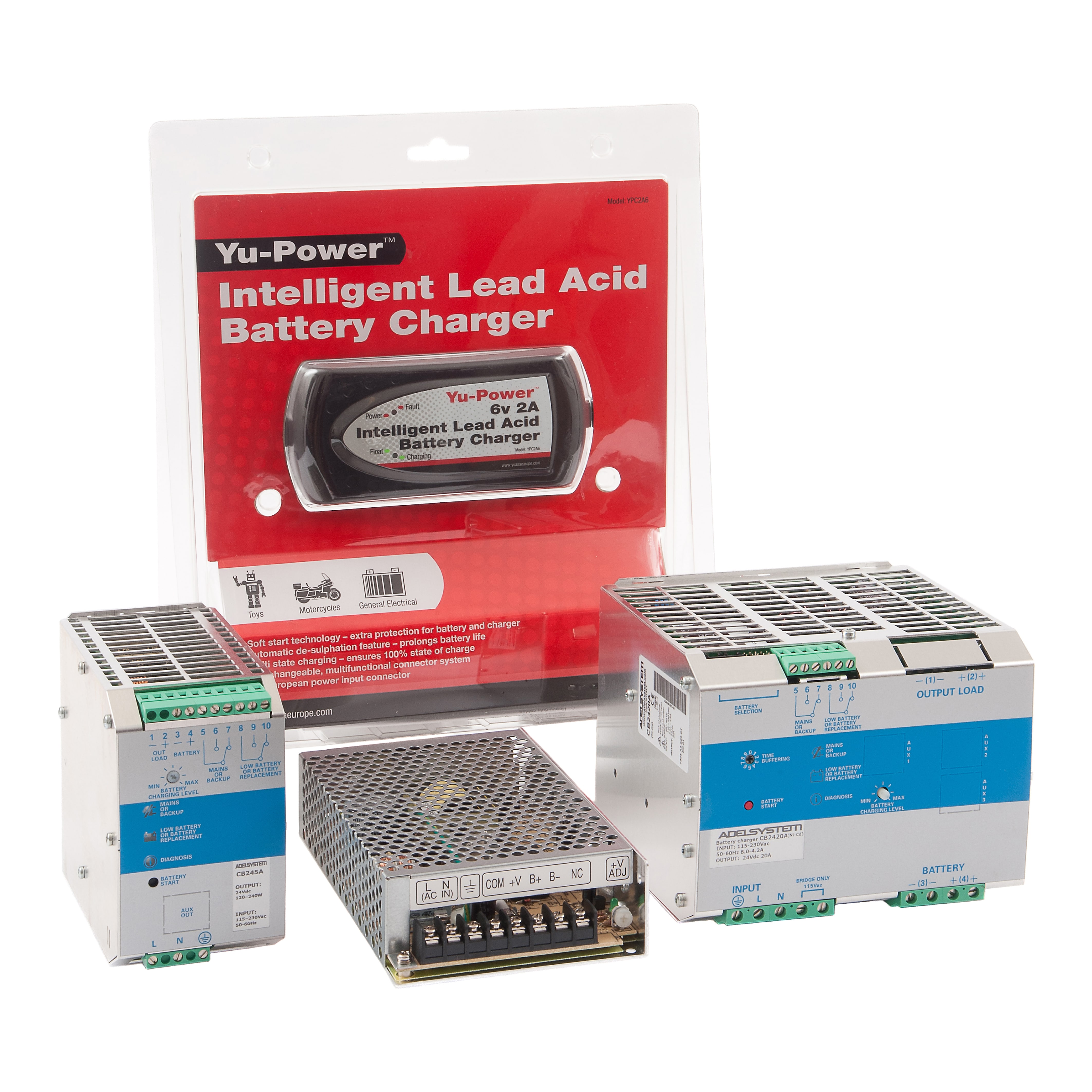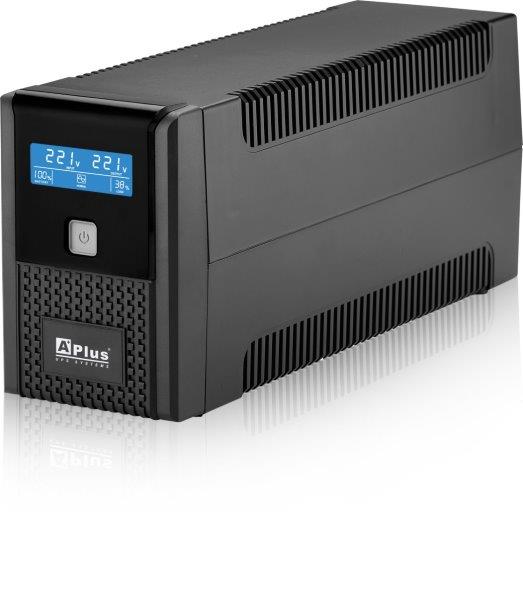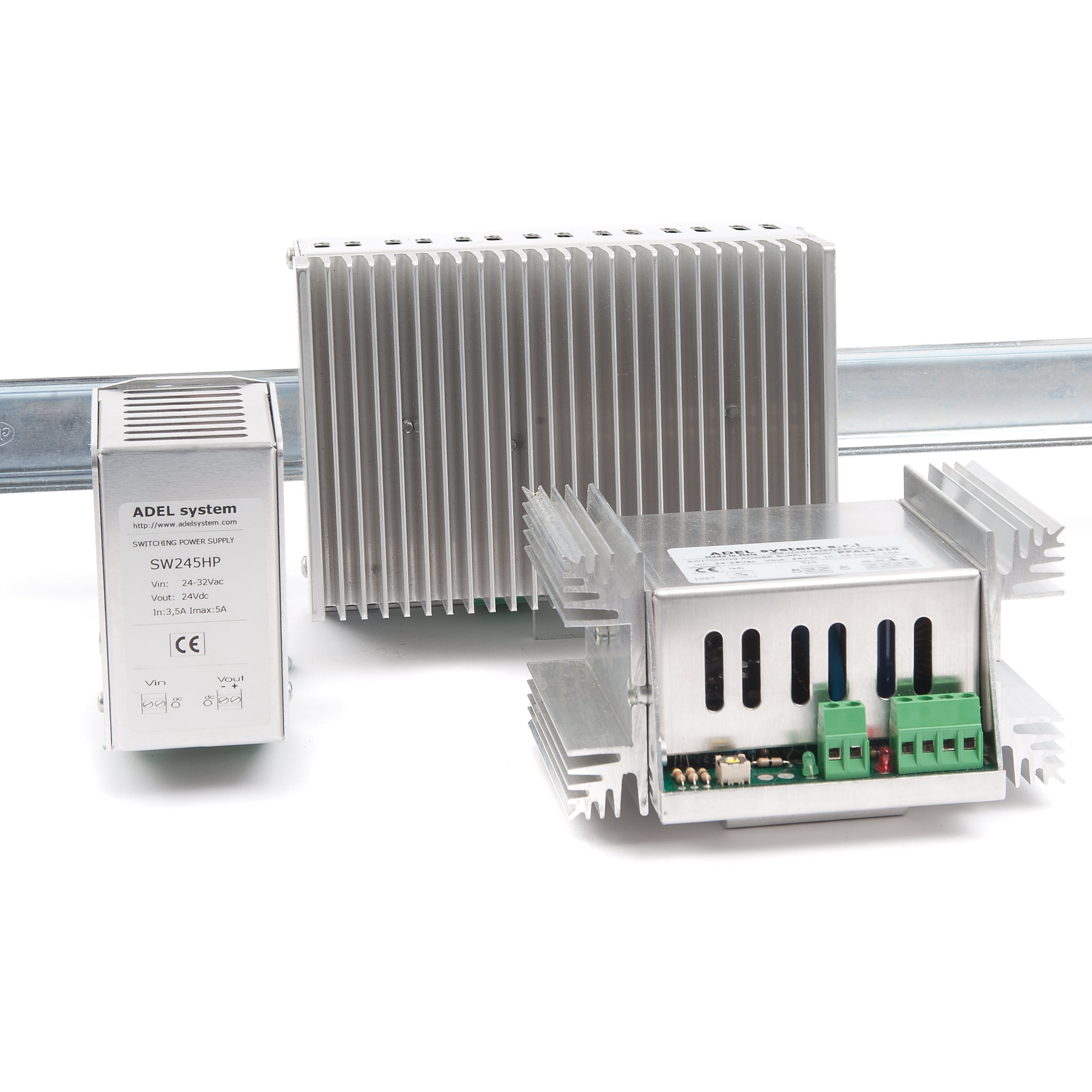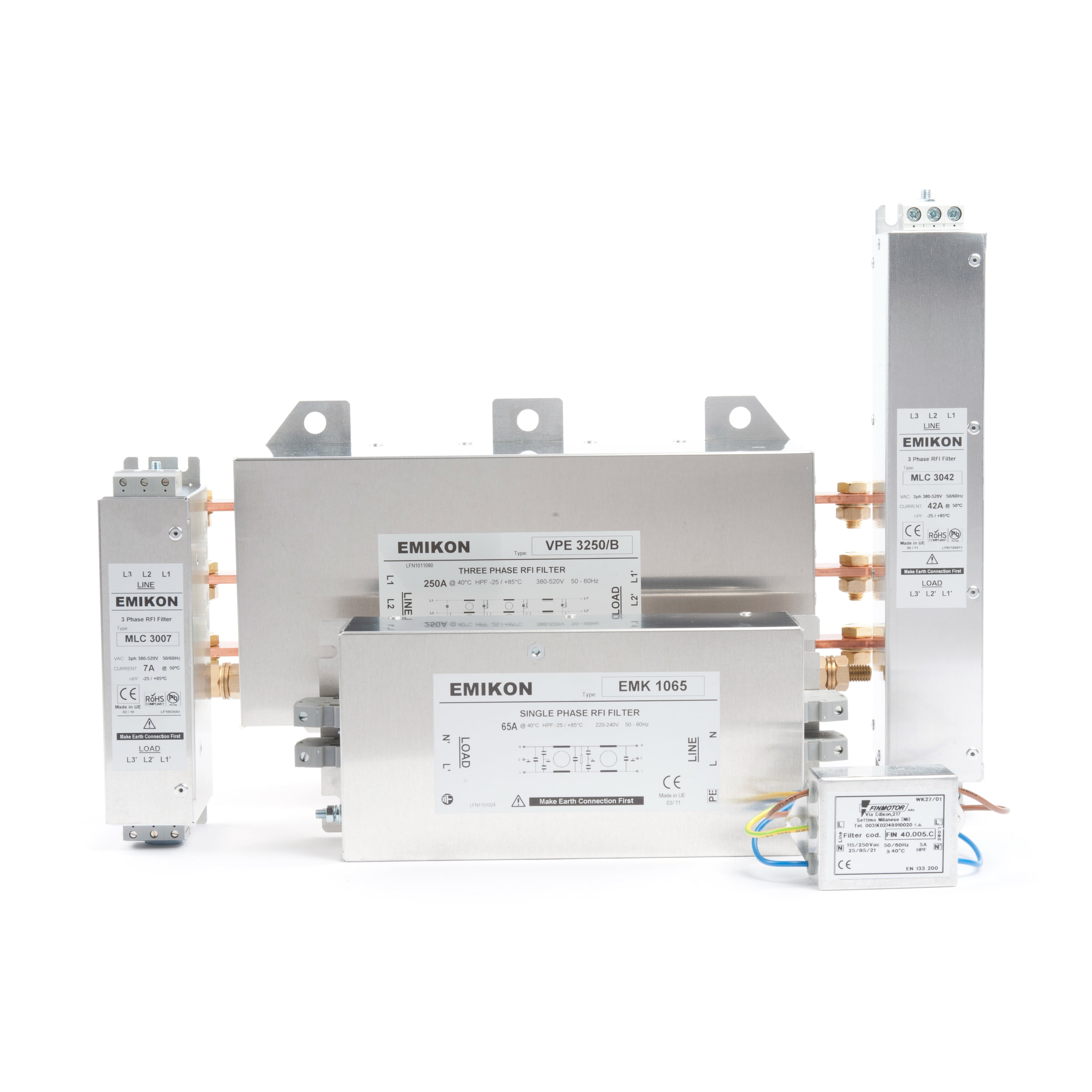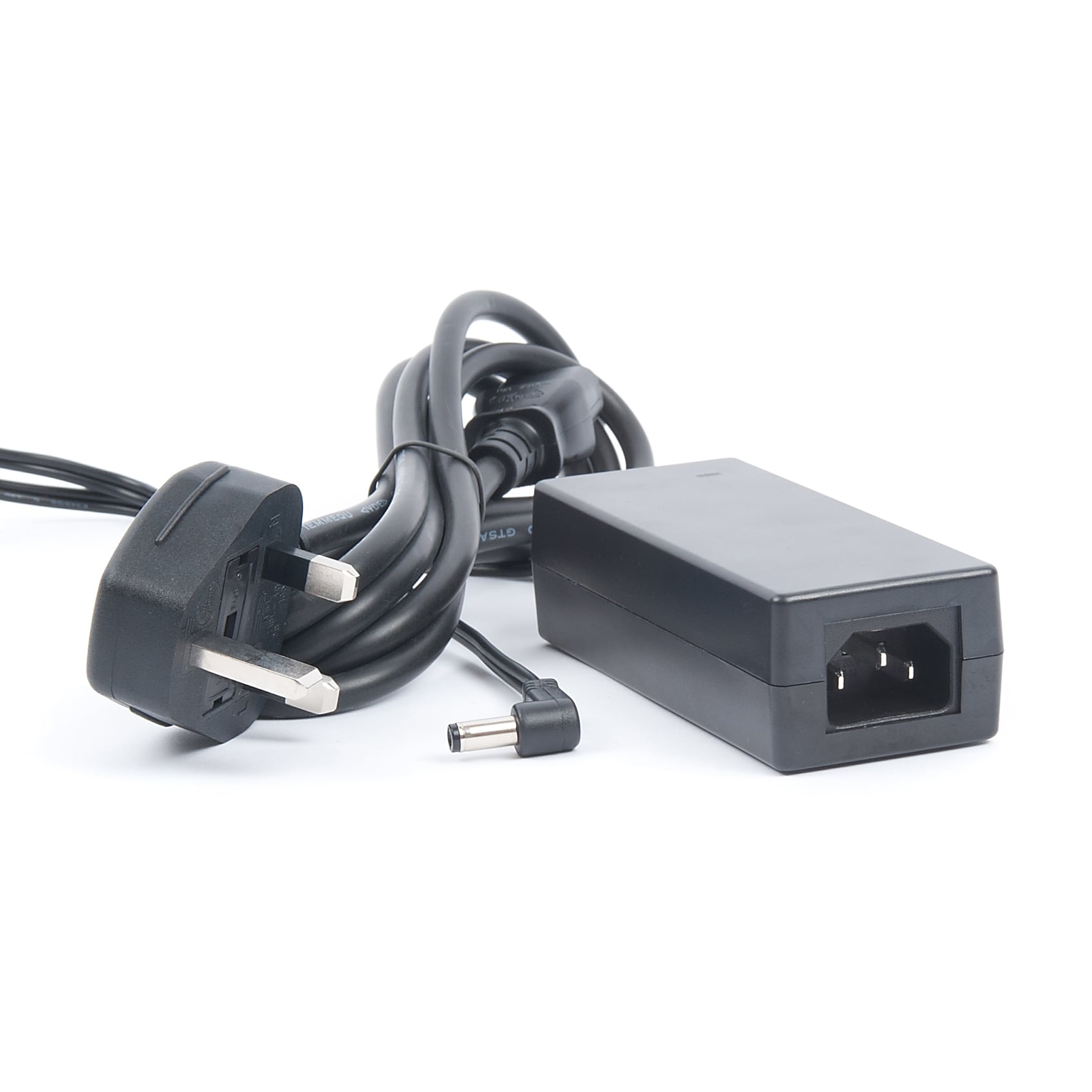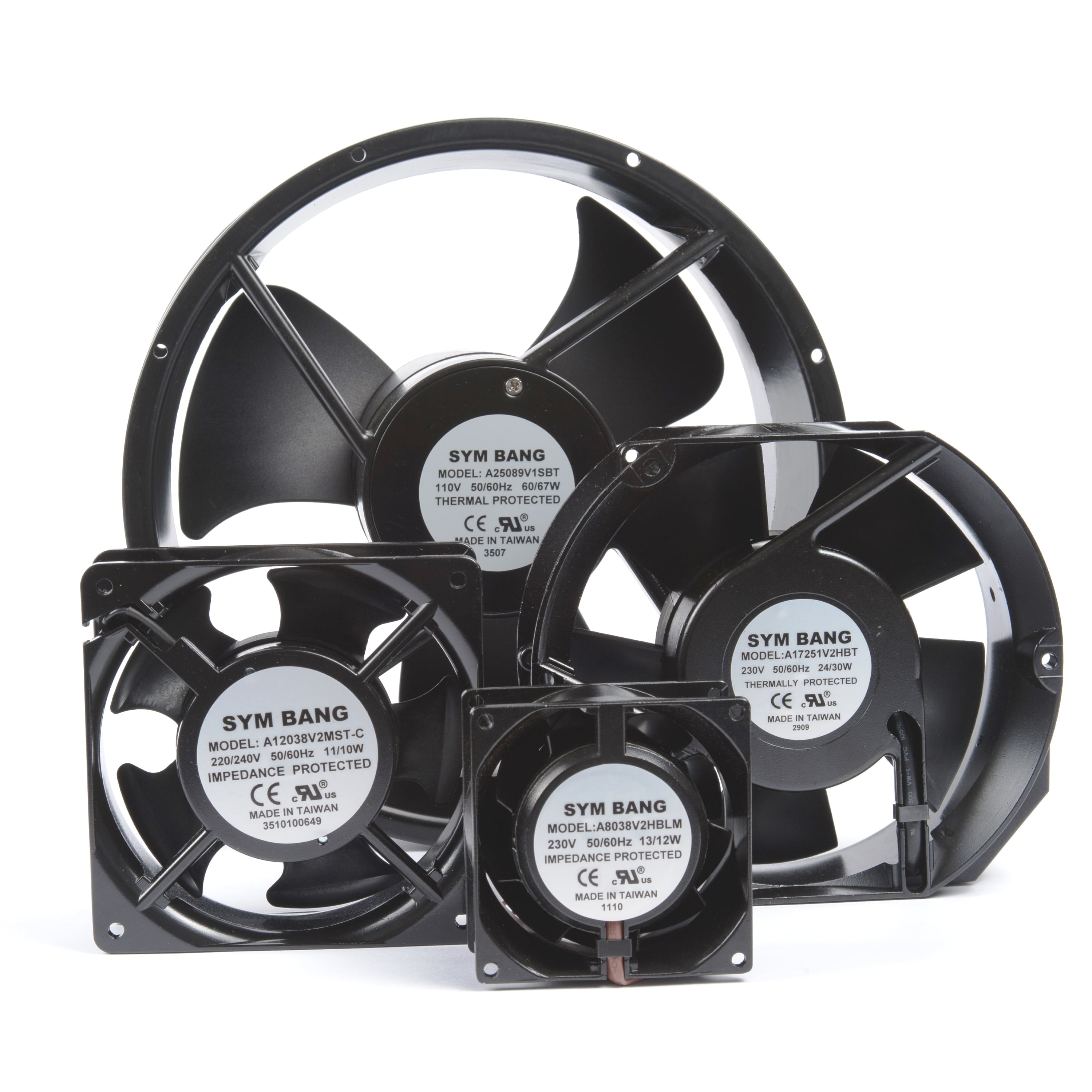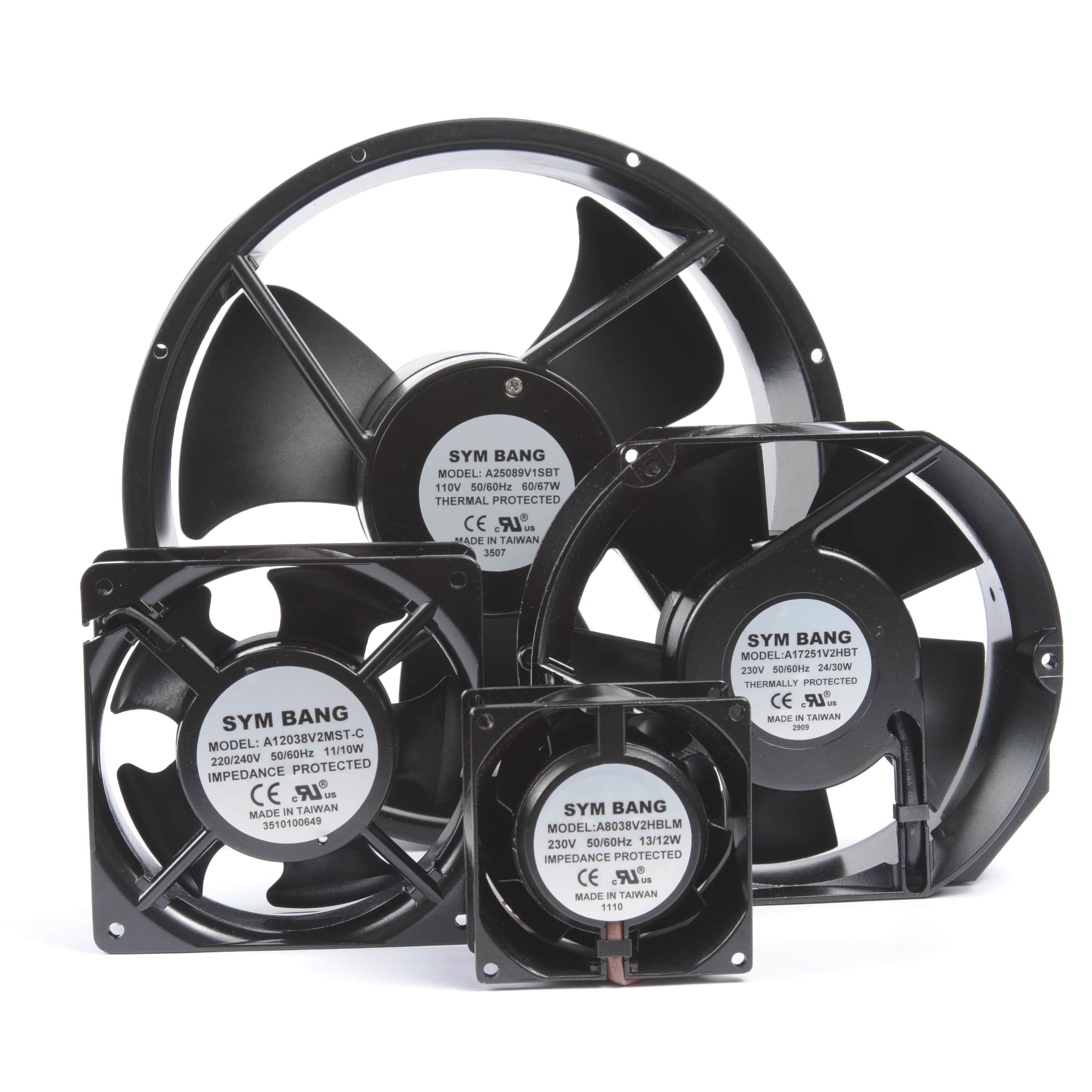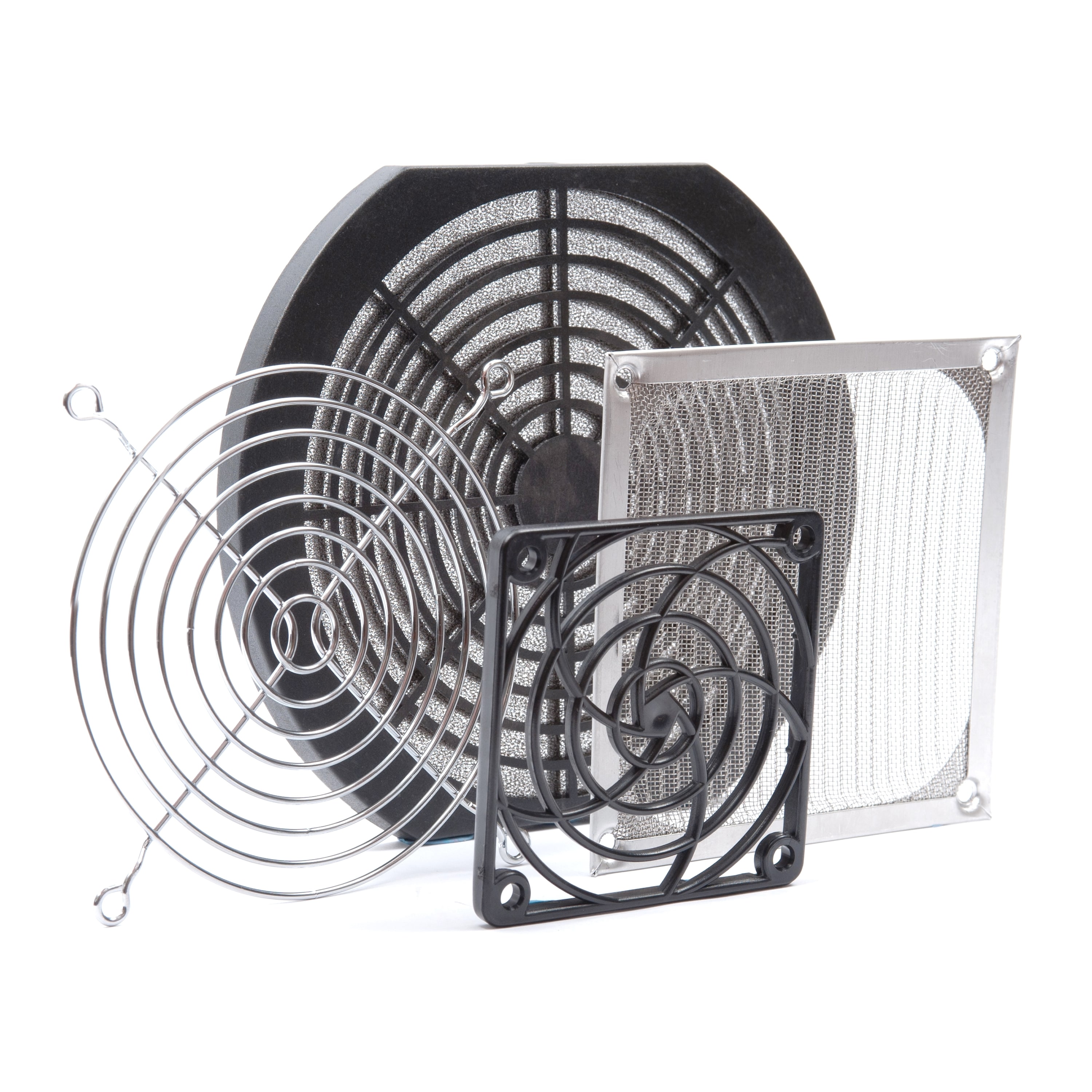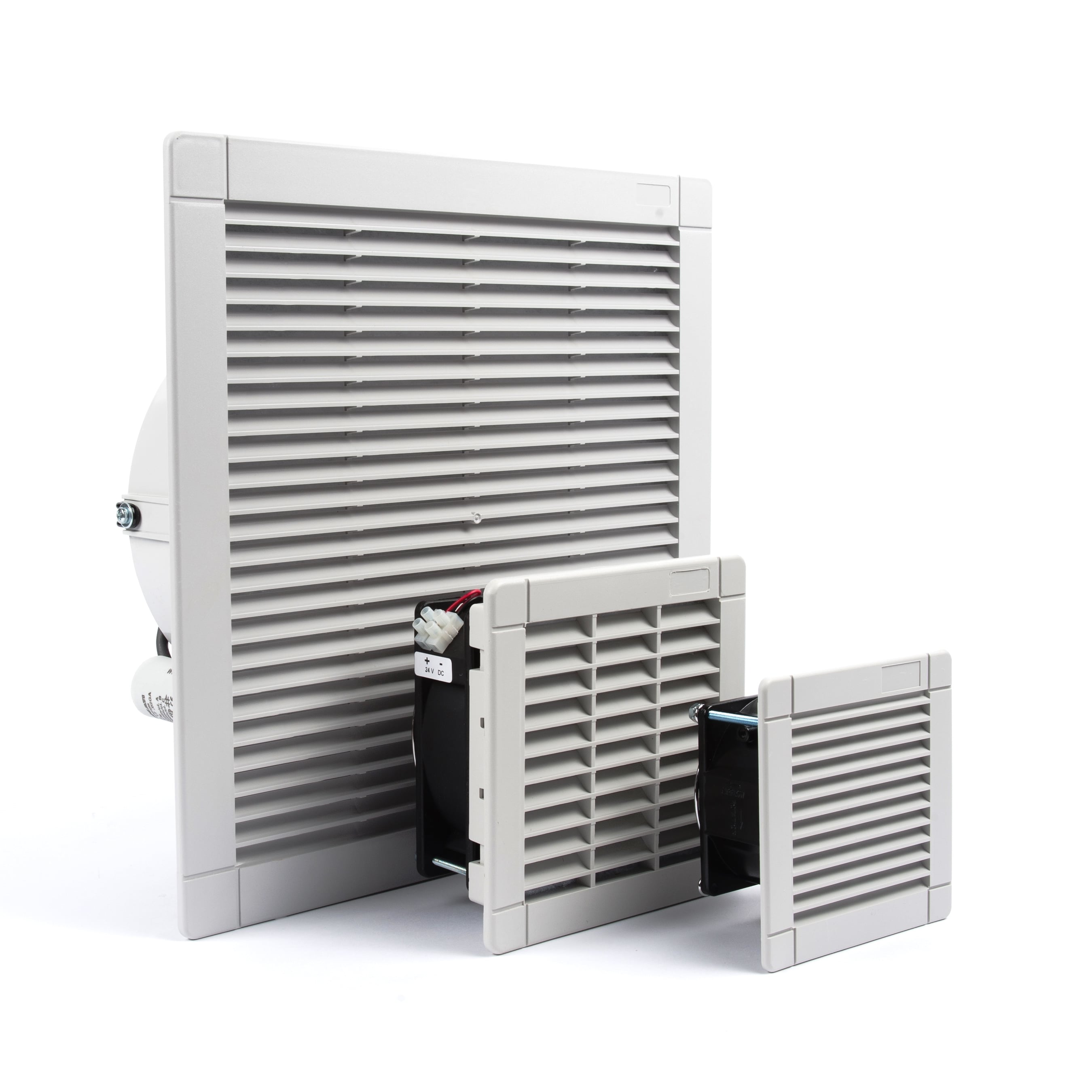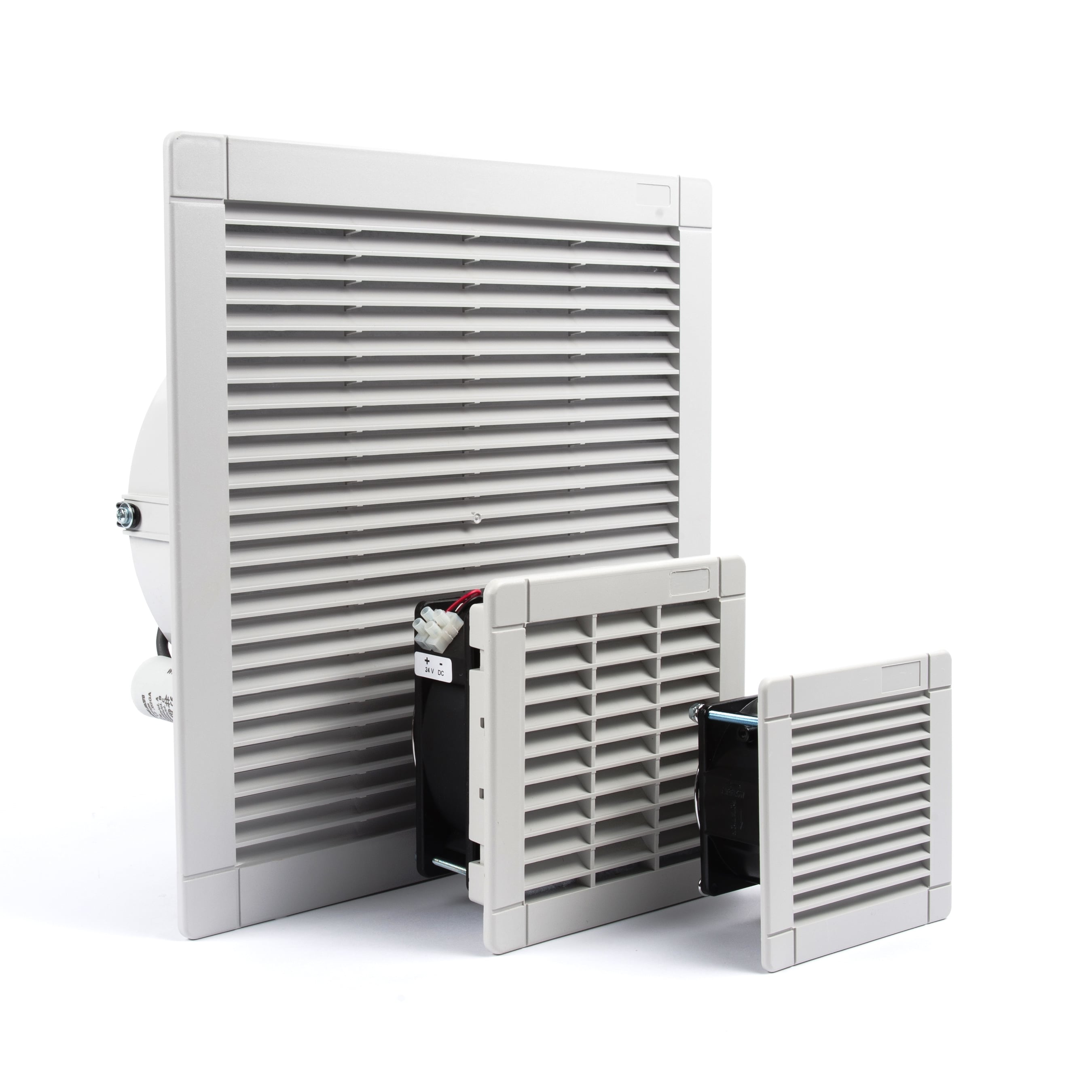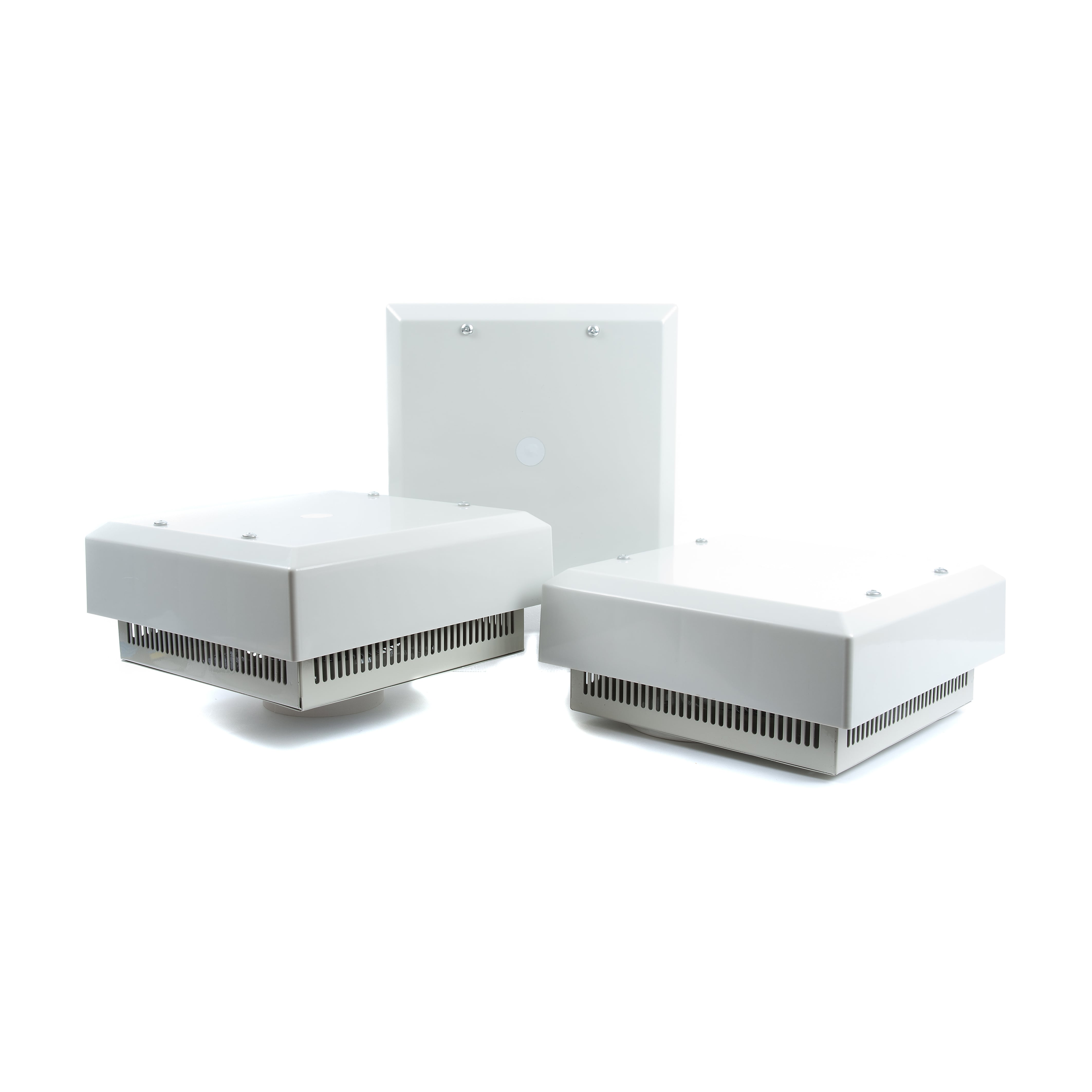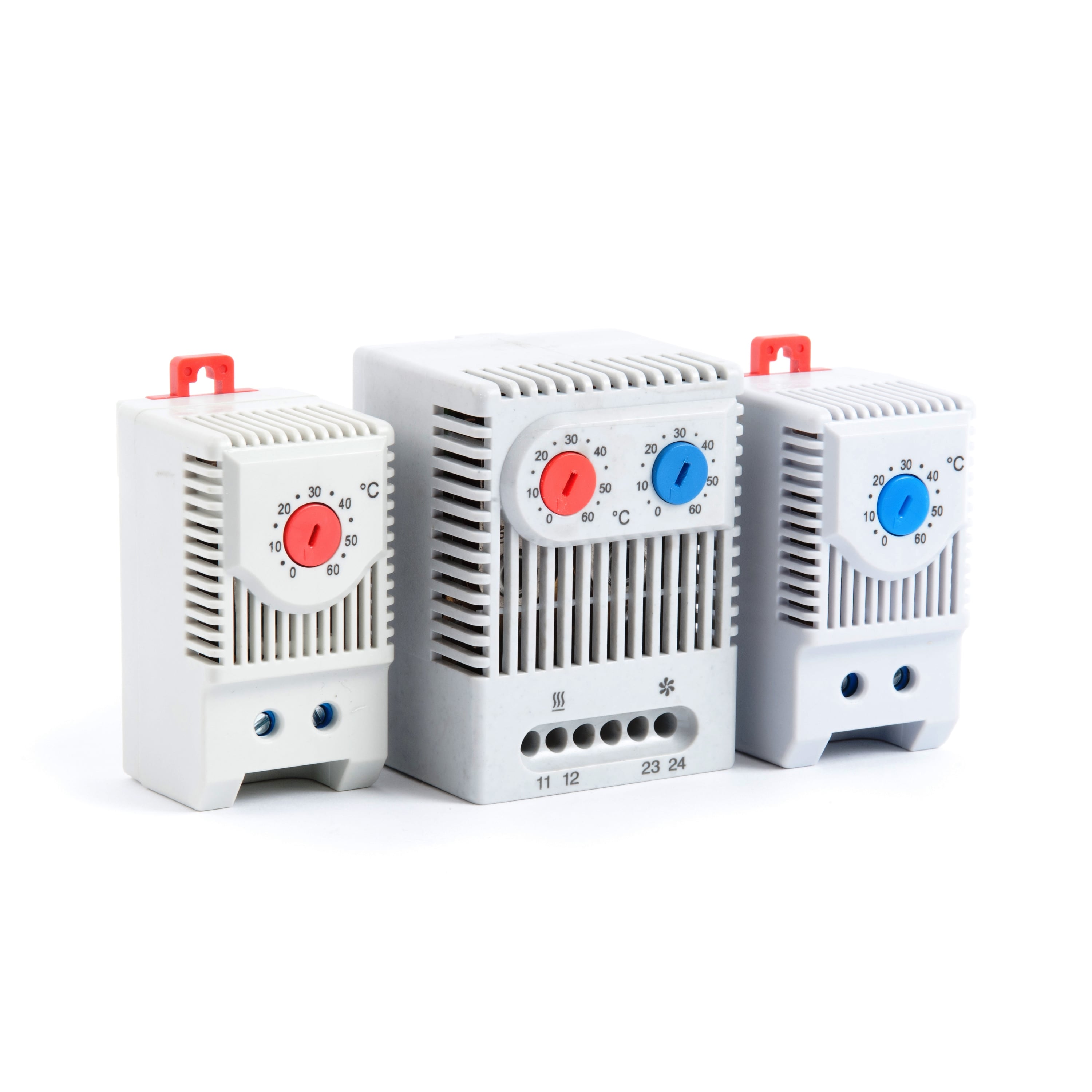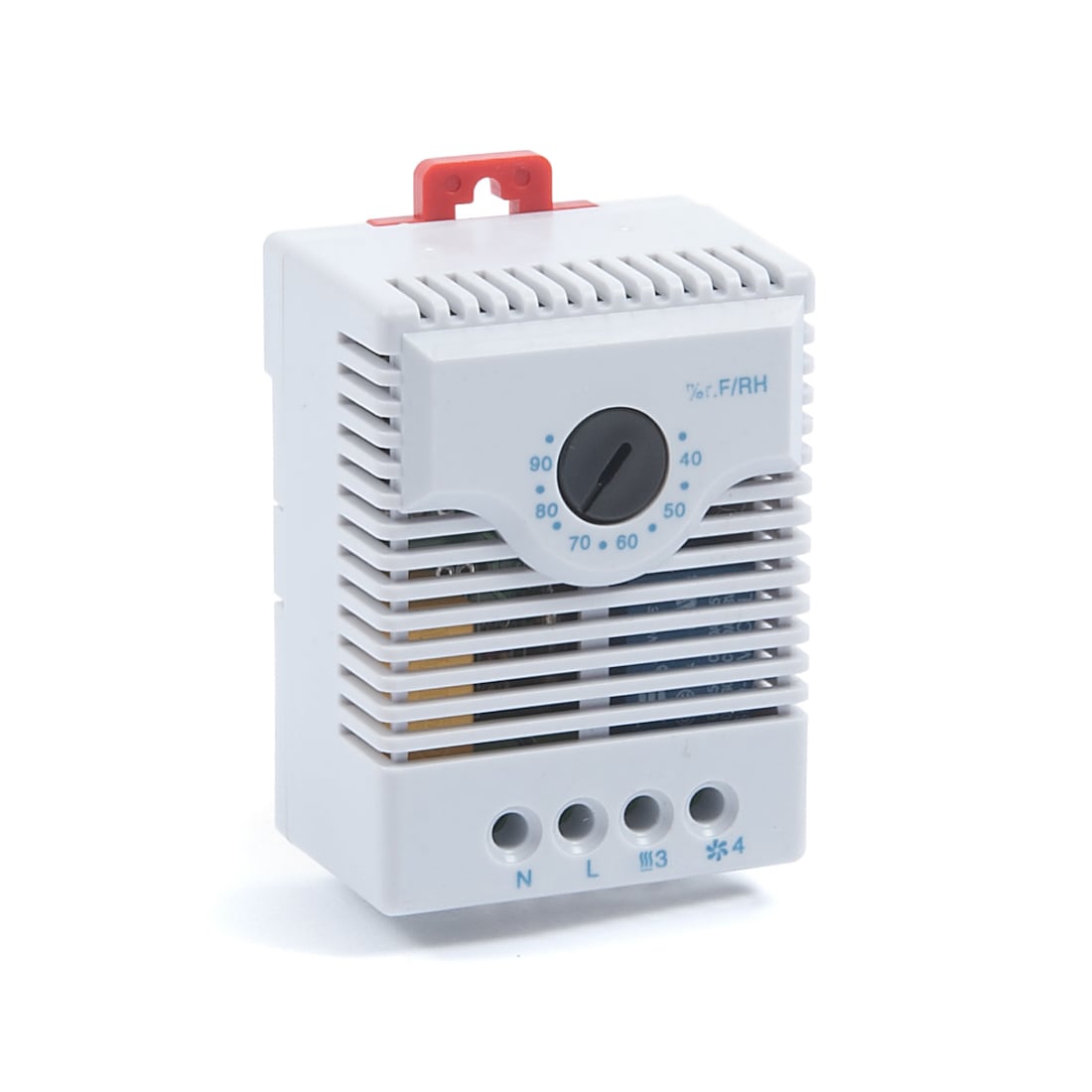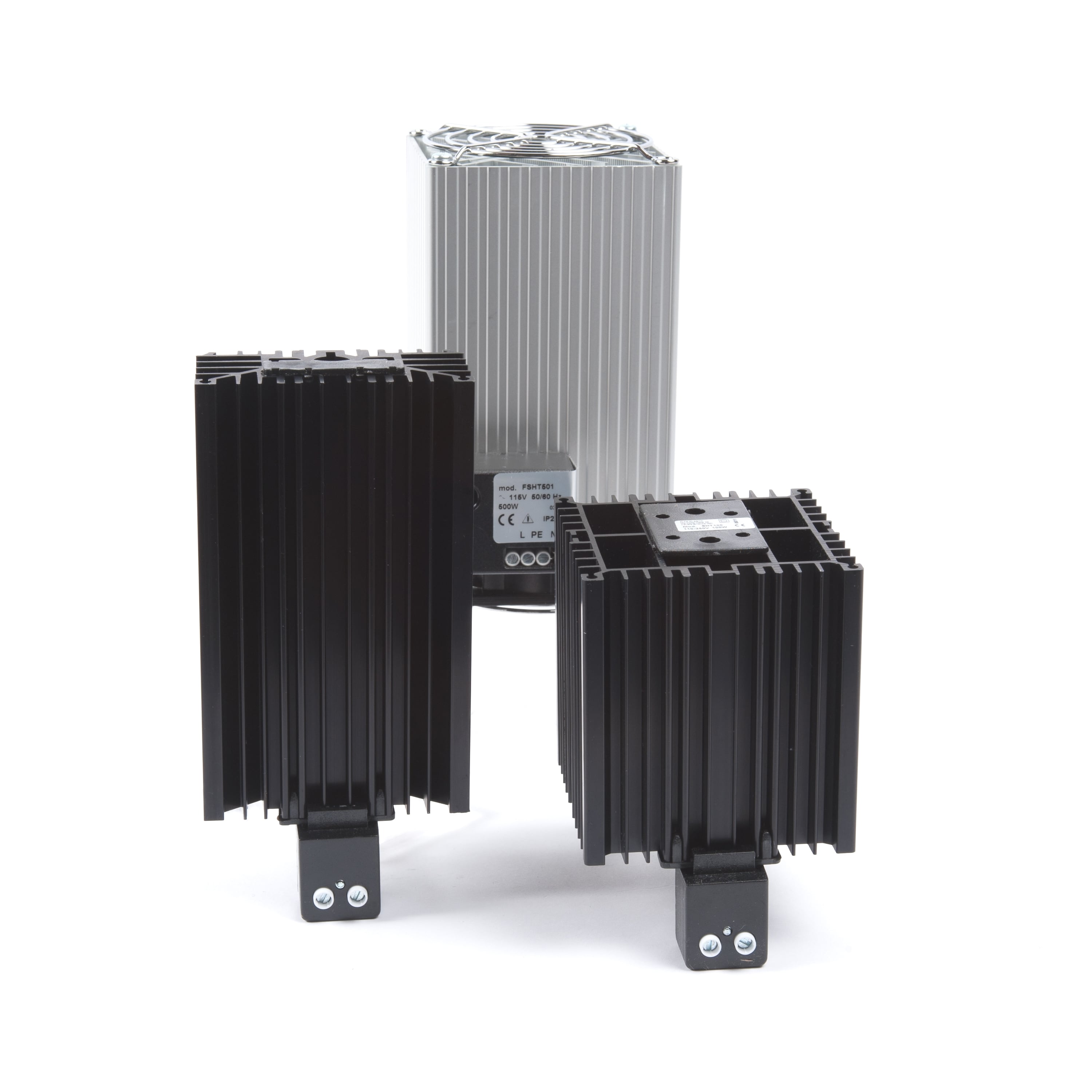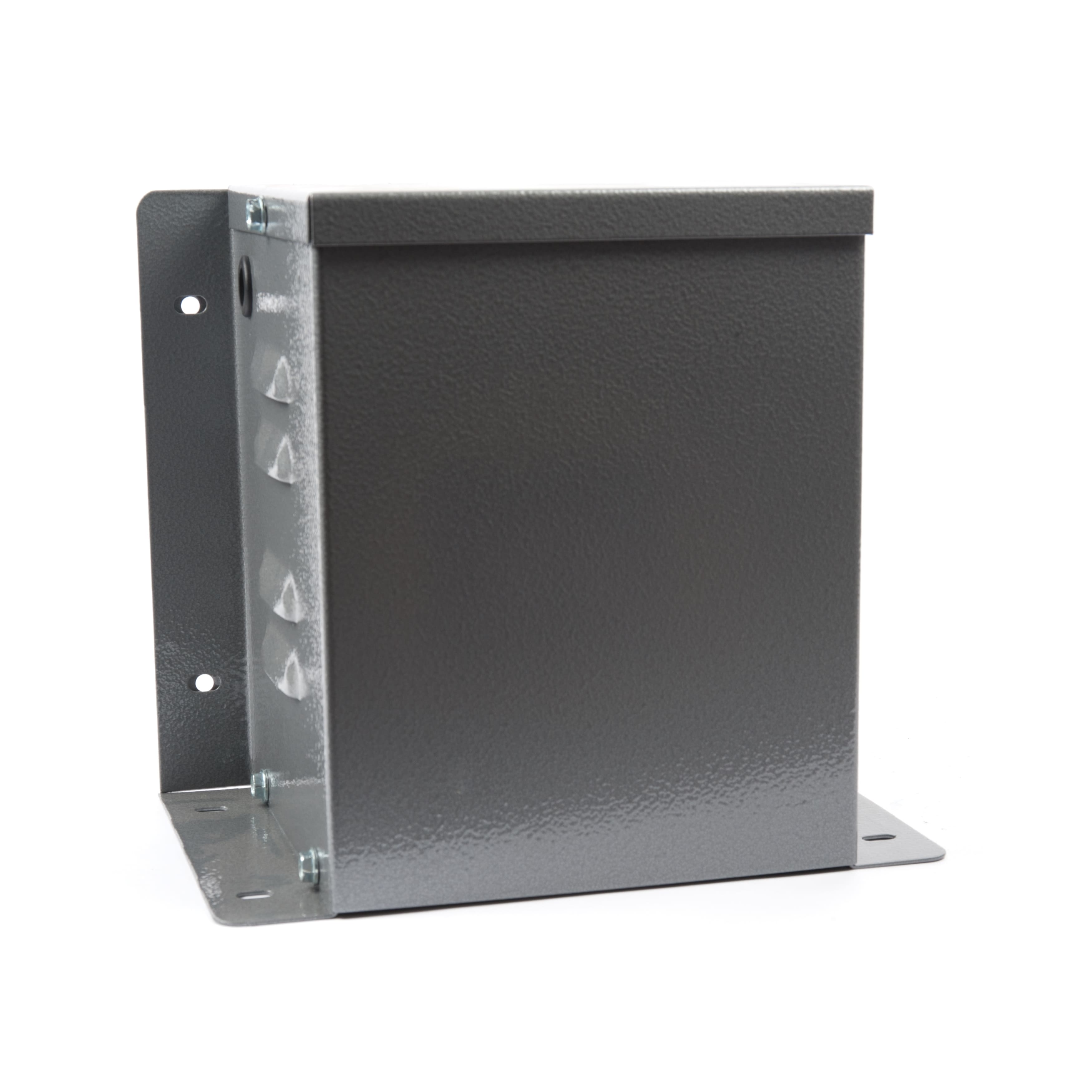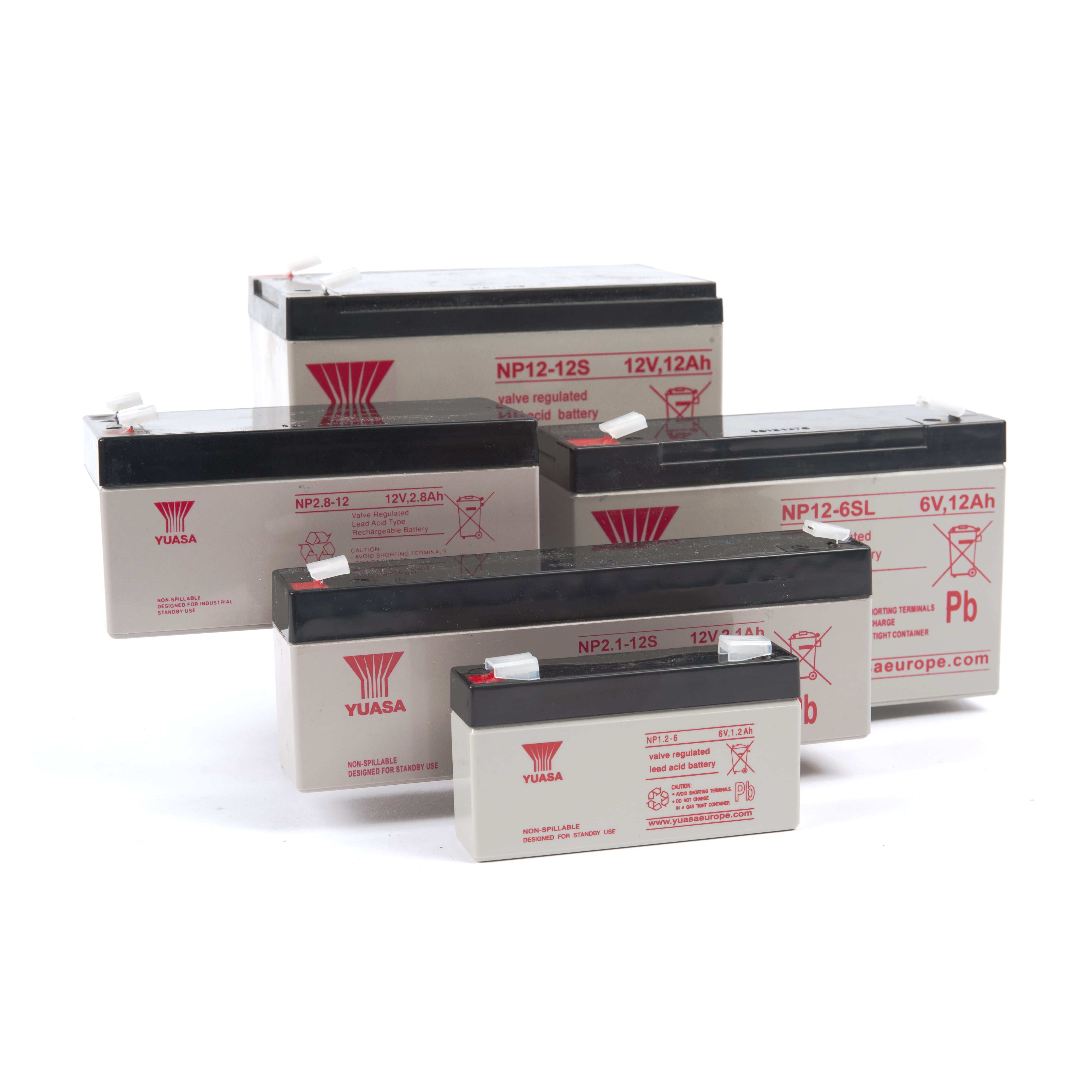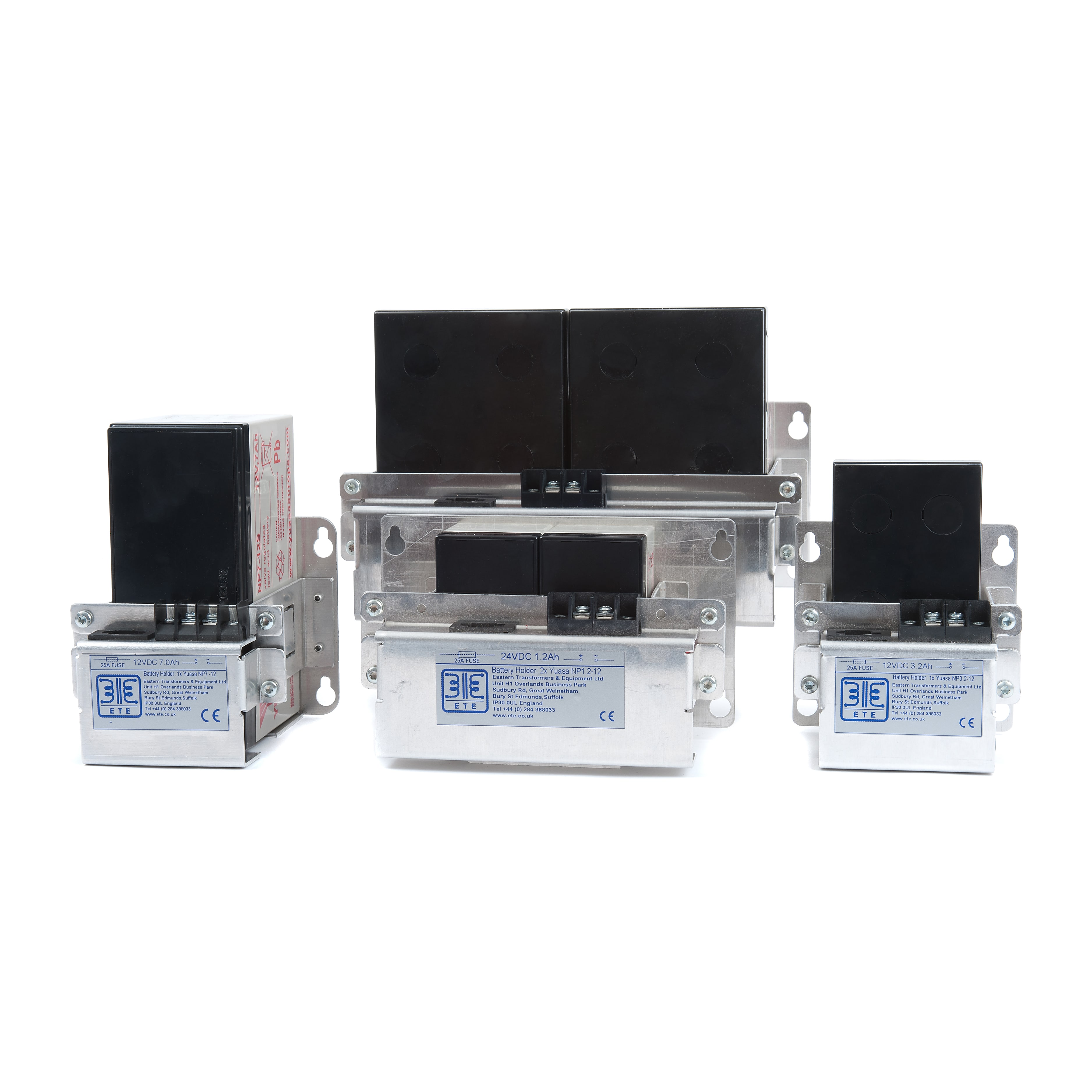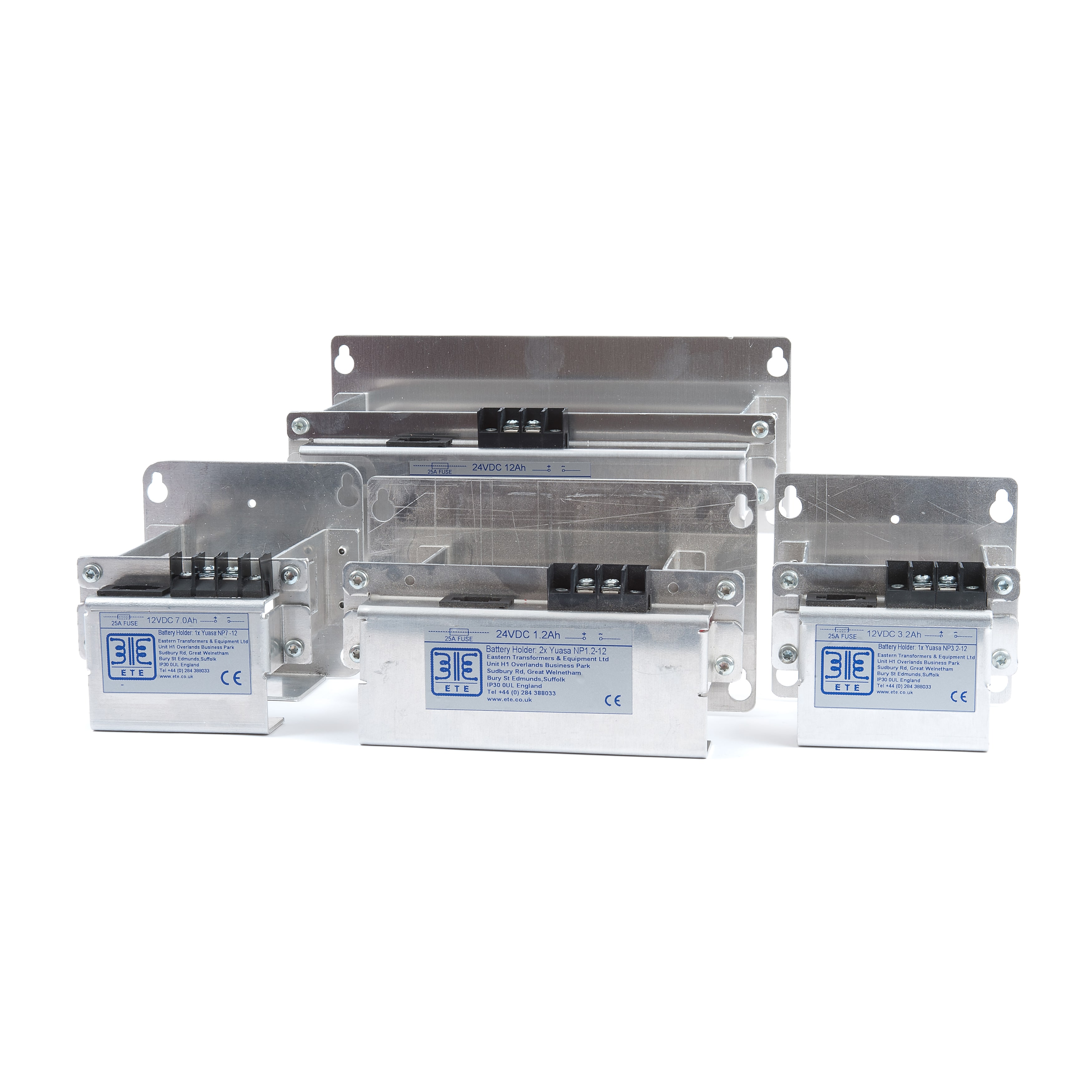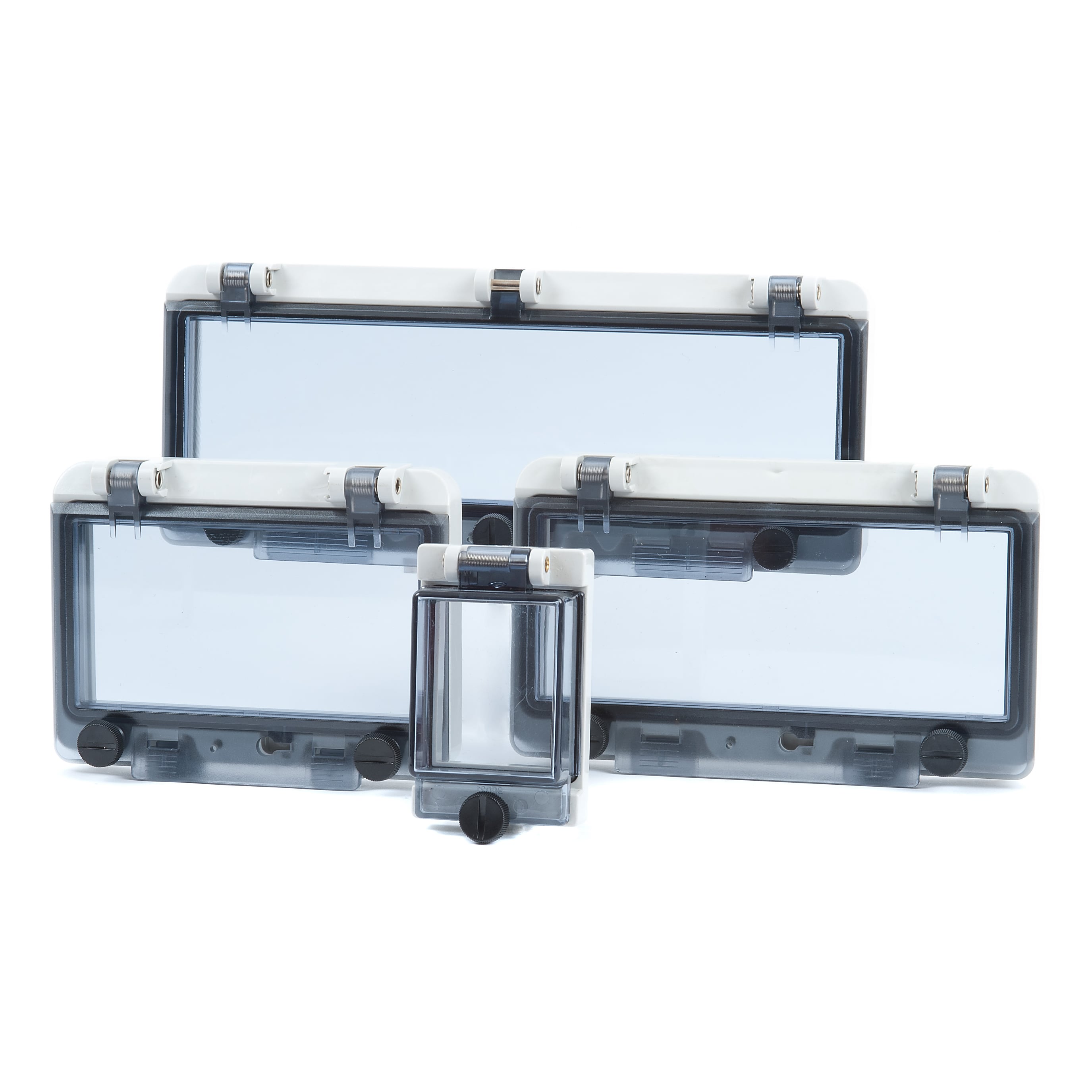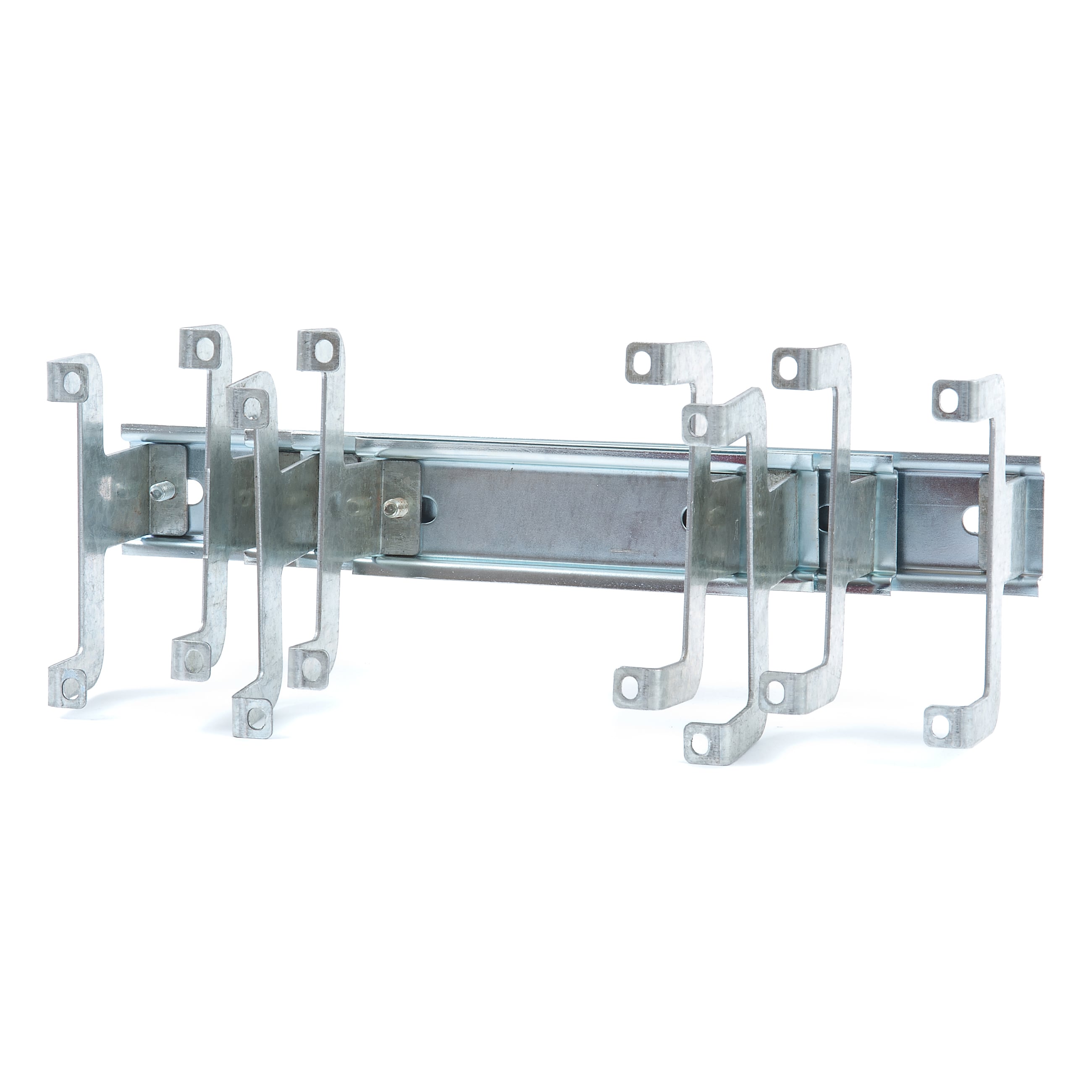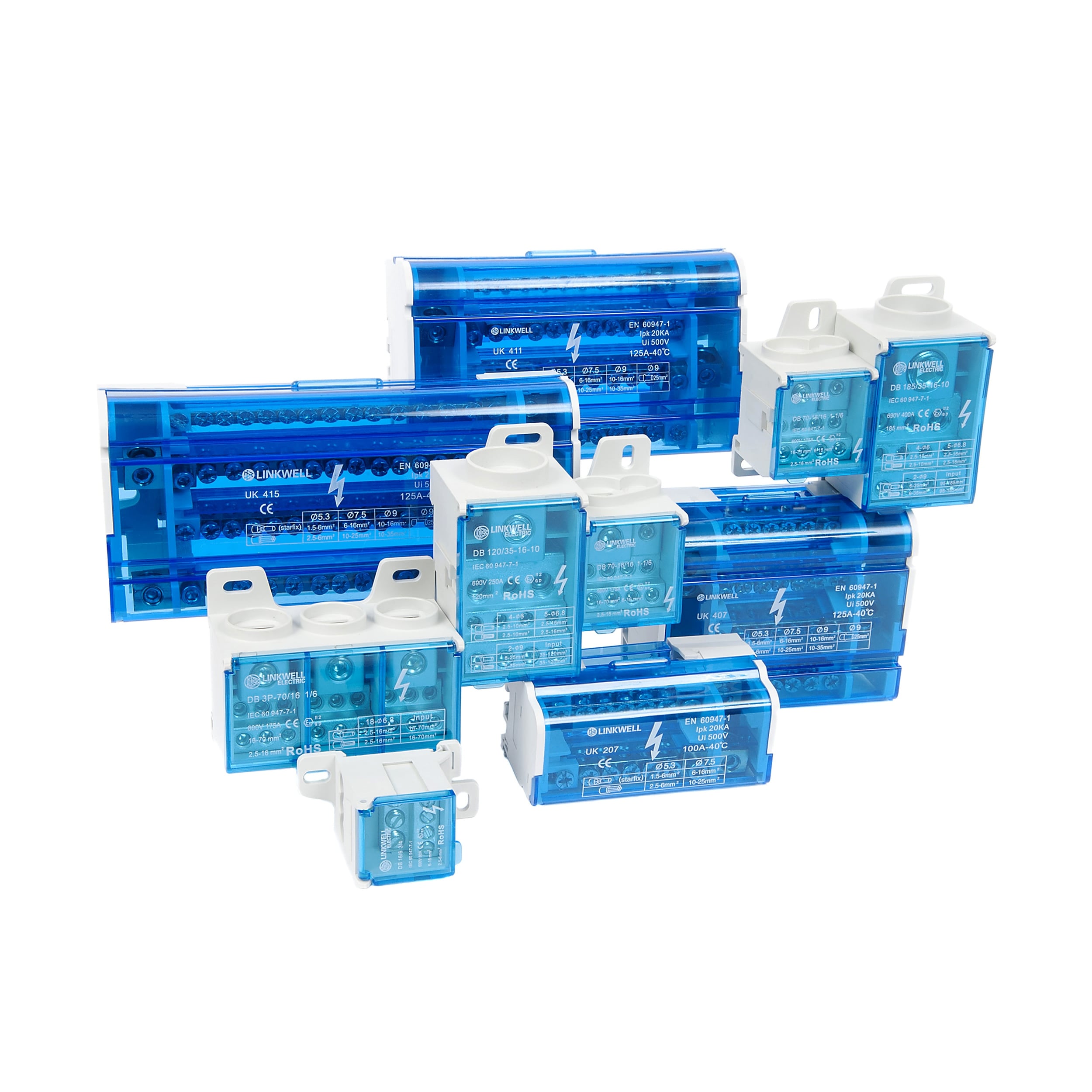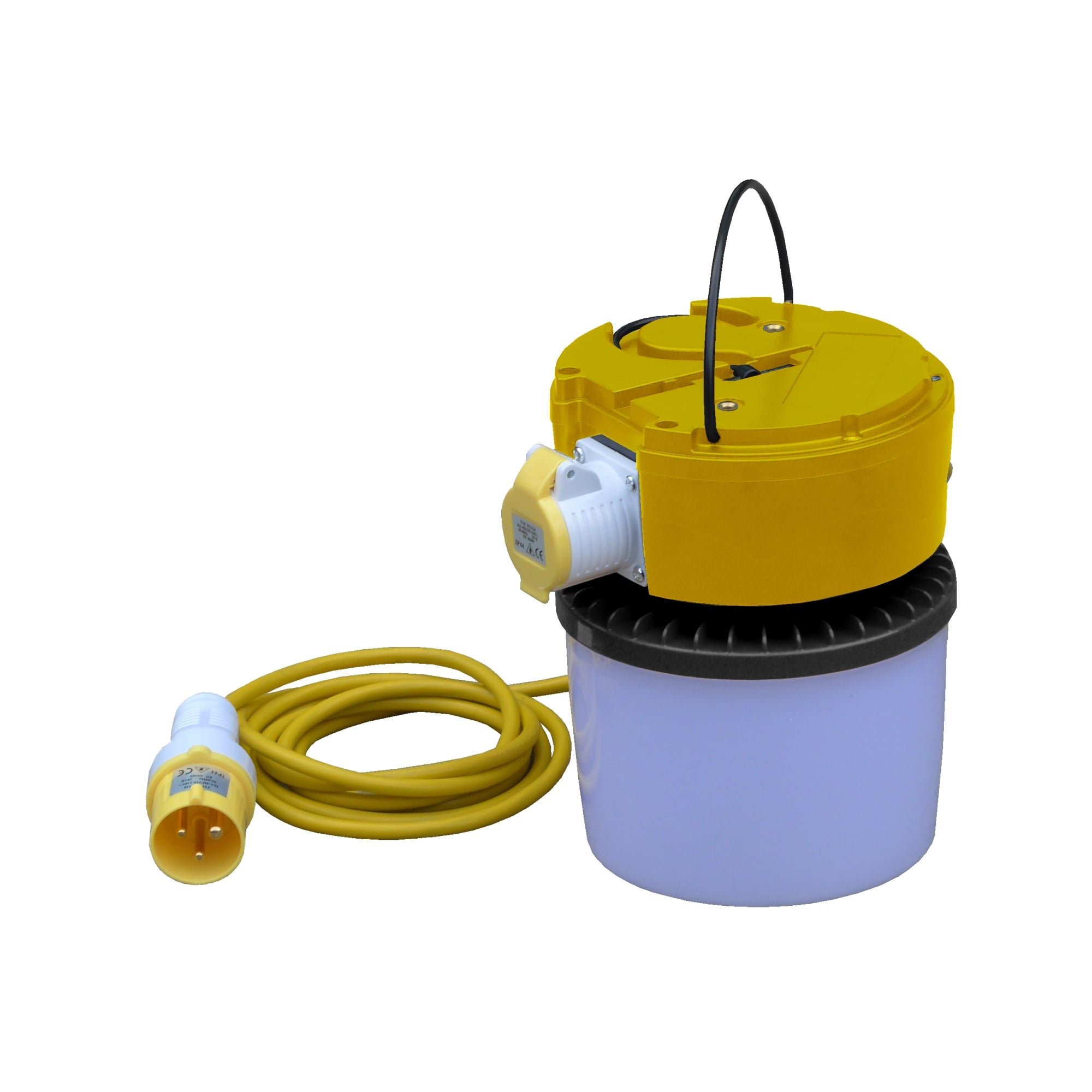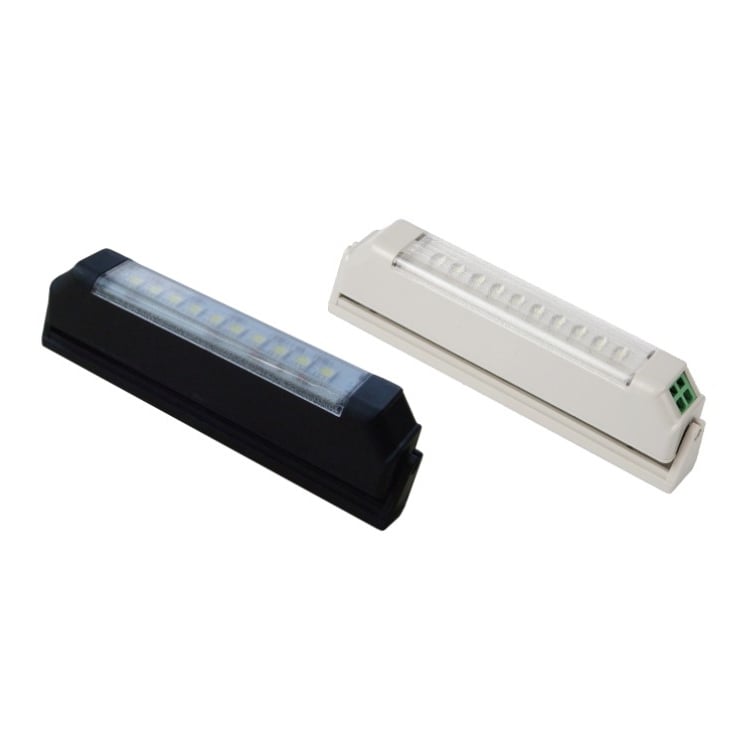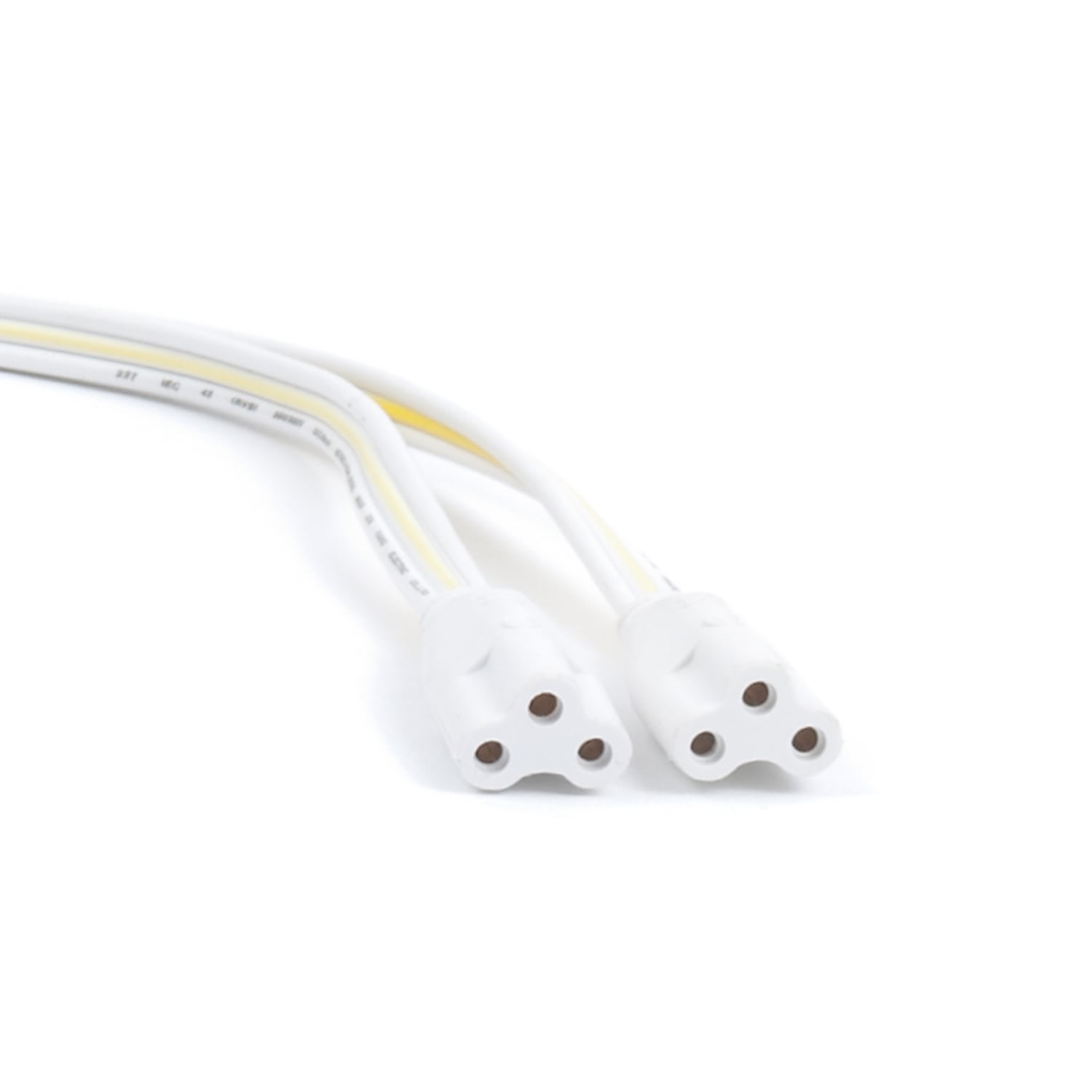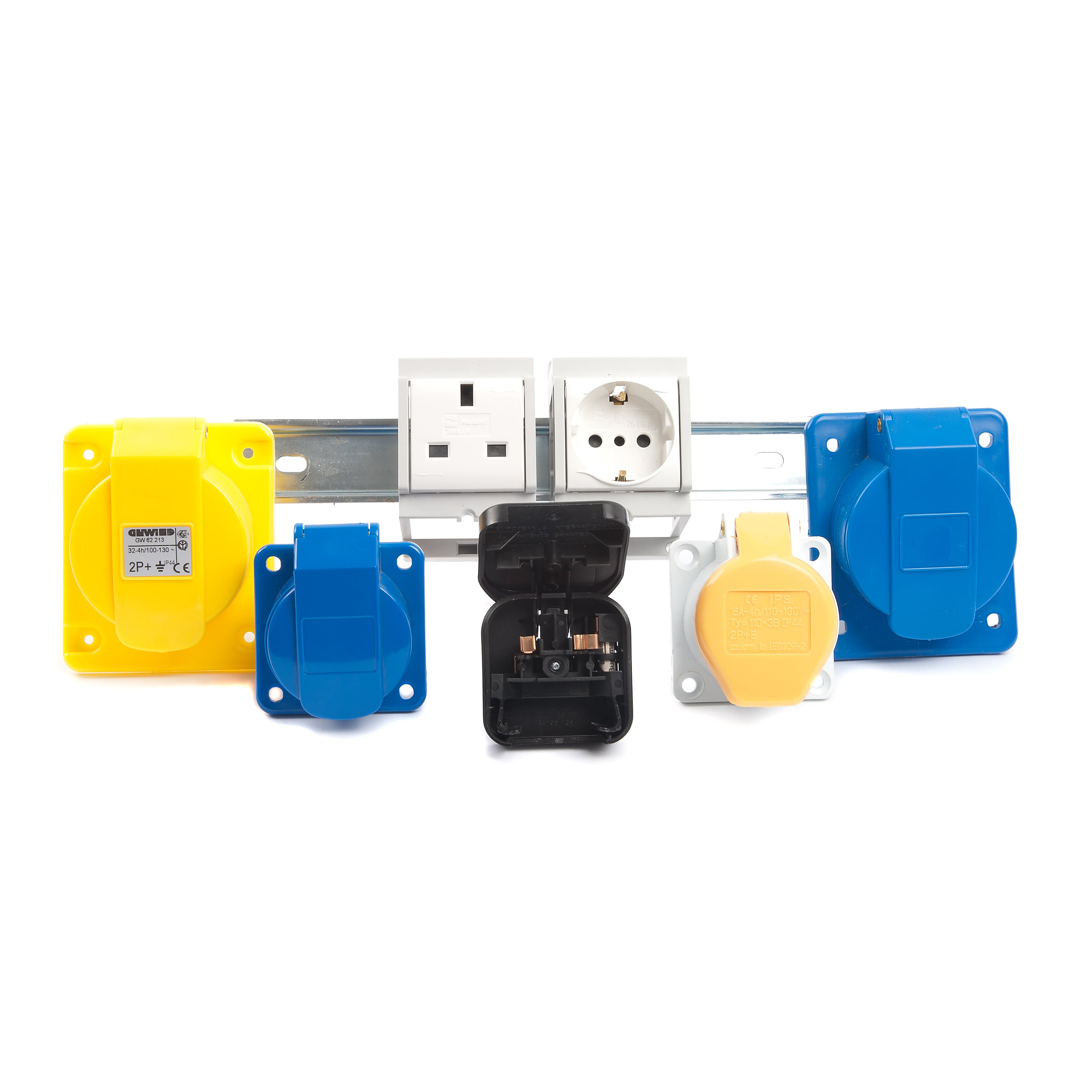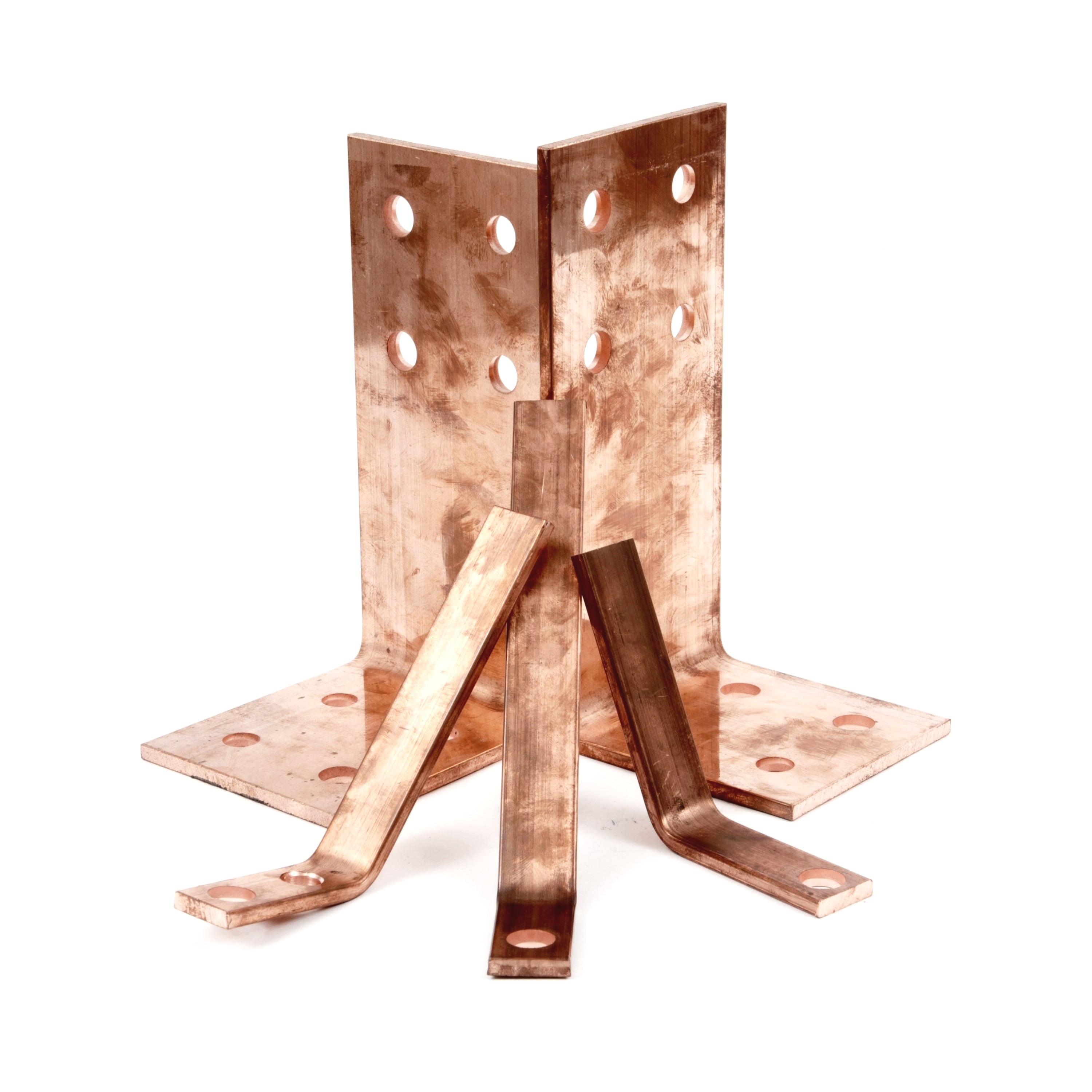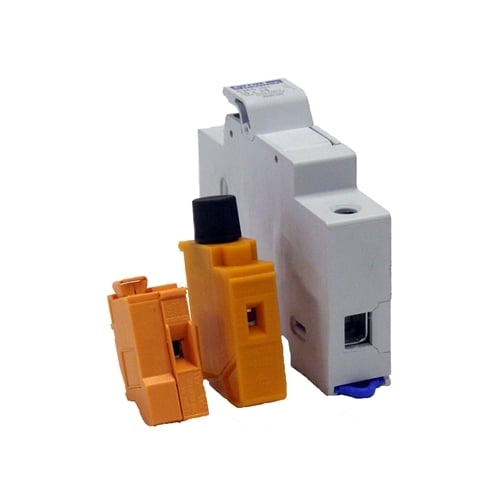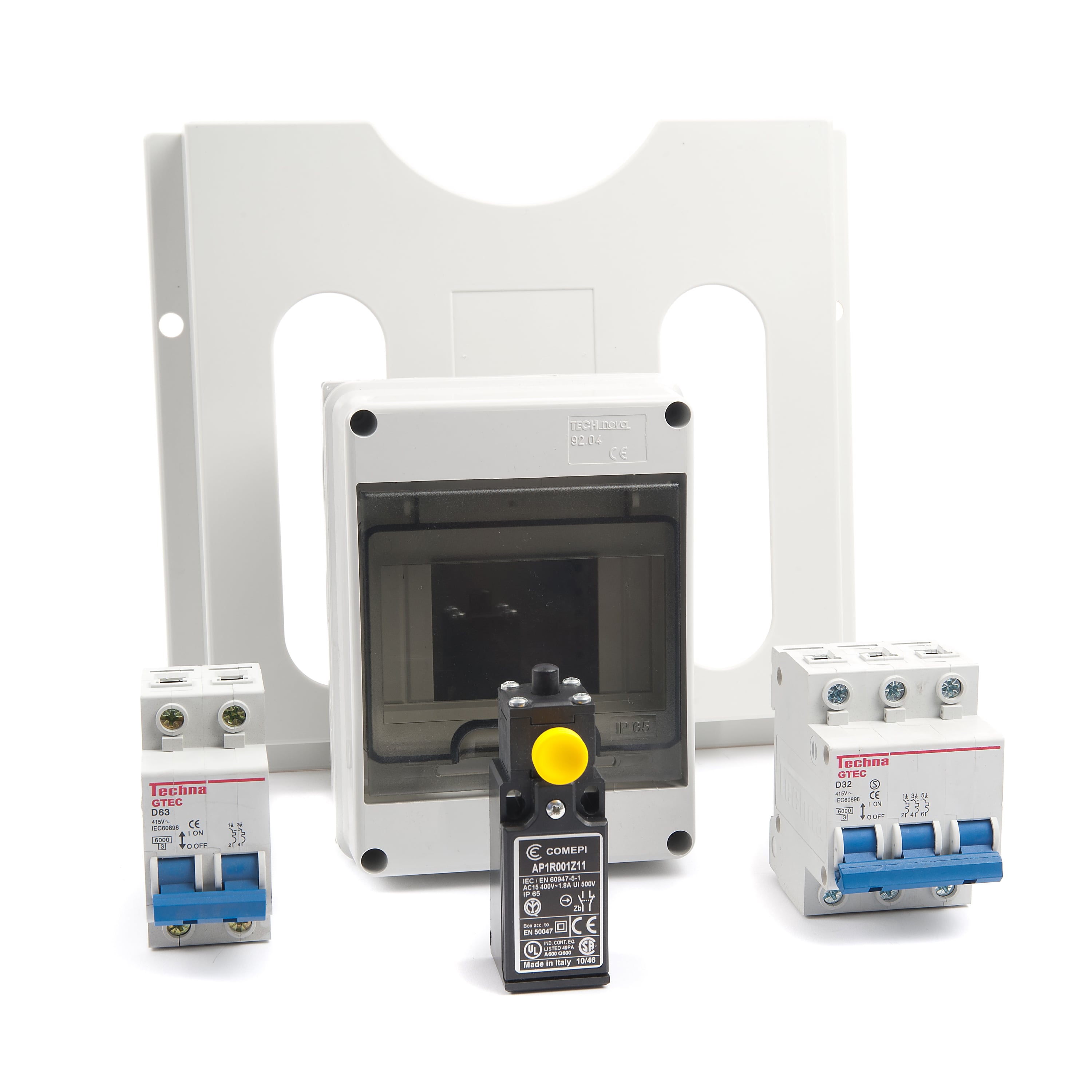Blog
Introduction
Transformer specifications range from the very simplistic to the extremely complex. A multitude of aspects must be considered when specifying a transformer that can cause headaches for even the longest serving of engineers. A common obstacle encountered when buyers are deciding upon a transformer is that they are not always sure as to what they are looking for and/or the exact requirements of the transformer. This can result in inaccurate information being presented to the manufacturer and inevitable chaos ensuing. It is fundamental that transformers are designed to appropriately, and efficiently, complete their required function in the first instance. Assembly based on erroneous information can lead to an ineffective transformer with costly and time-consuming ramifications.
Phasing
The first factor that must be considered when selecting a transformer is whether it should be single-phase or three-phase.
The specifications of single-phase transformers are generally relatively simple. The only information required are the input / output voltages and the power rating (VA). Buyers tend to leave the rest to the manufacturer to determine based on the requirements of the transformer. The majority of the common requirements, within the controls and automation industry, can be fulfilled by standard single-phase transformers.
Stock or Custom-Built?
Some transformer manufacturers stock a number of the most frequently ordered transformer combinations. Eastern Transformers & Equipment (ETE), for example, offer one of the widest ranges of stock transformers in the UK comprising 219 different popular variations (with power ratings up to 7.5kVA). Stock ranges afford the customer easy and swift access to the transformer of their choice when placing a routine order.
Any transformer request that falls outside of the standard stock range of a manufacturer will need to be custom-built. Bespoke transformers involve the customer and manufacturer liaising about how exactly the transformer should be designed based upon its function, environment, and requirements. The final product should meet the customer’s exact specifications. The input / output voltages, power rating, number of outputs, safety standards, insulation class, protection devices, enclosure, exposure to hazardous areas, dimensions, and finish are all factors that need to be decided upon in the process of designing and manufacturing a single-phase or three-phase transformer.
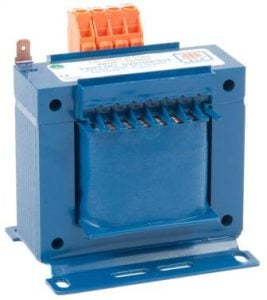
Example of a standard single-phase stock transformer
Input / Output Voltages
The input voltage simply refers to the power from the supply, whereas the output denotes the load of the transformer. This is the most pivotal factor of the specification process as converting one voltage to another is, after all, the primary purpose of the transformer. One essential factor that is frequently overlooked however is ensuring the transformer is covered for the ‘worst case scenario’. This is known as the maximum load and is the greatest applied load the transformer will be subjected to at any one point. As is often the case, transformers are ordered to their typical load without consideration for periods where they could have higher loads running through them. Failure to recognise this possibility could result in a reduction in the life expectancy of the transformer and the transformer failing. The maximum load should be calculated by adding all the voltages and currents of any application that could be running simultaneously. Despite this, it is important not to go overboard and over specify the power rating of a transformer. A transformer that is rated higher than necessary will be larger and more costly than needed.
The power rating refers to the maximum power the transformer is capable of supplying under typical operating conditions without exceeding predetermined internal temperature limitations.
Number of Outputs
The number of outputs is another relatively simplistic factor to be considered; merely the number of differing voltage outputs required so that multiple loads can be supplied. If differing voltages will be required at various times then it is a good idea to request multiple outputs to cater for all potential voltage needs. Deciding upon one transformer to supply multiple loads, opposed to numerous single output transformers, will make the selection process a lot easier (as well as saving time, space, and money).
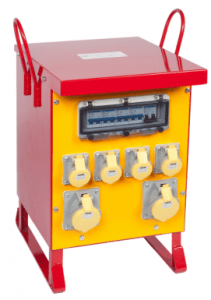
6 output socket portable site transformer
Safety Criteria
Sometimes a transformer is required to meet certain approved safety criteria (e.g. EN, UL, and CSA). Differing governing standards exist and depending on whom the transformer is for, or where it is going to be located, the buyer may want the transformer to fall in line with a specific safety standard. Safety standards are designed to give the buyer peace of mind that their transformer is safe after adhering to standardised safety levels.
The amount of heat given off by a transformer can vary and the maximum temperature a transformer will run to should be governed by what is acceptable to the customer. Transformers will by nature work at high temperatures, but what is deemed safe depends on its location and environment. Various insulation classes are available that determine the temperature to which the transformer will run and the quality of the materials utilised. Higher quality core materials result in reduced energy losses. Alternatively, cheaper, reduced quality, core materials are energy inefficient. Although such materials can decrease the overall cost of the transformer they must work harder to provide the same output which is, of course, more costly in the long run.
Protection Devices
Anticipating contingencies is critical to ensuring the routine running of the transformer even when anomalies present themselves. Protection devices such as thermal cutouts and thermistors (for overload protection) help to keep things running smoothly and avert potential disaster. These precautionary additions are another dynamic the customer must consider. The more protections that are in place the less likely the transformer will be to fail due to deviant occurrences. Different protections can be more essential or less essential based on the function of the transformer and its environment. An experienced specialist will lend guidance on the importance of each, whilst the final decision will lie with the customer.
Transformers can be designed as either open type or enclosed. Enclosures are designed for the protection of persons and equipment and can be specified to provide as much or as little protection as required (signified by the IP rating). The probability of human contact, the environment, and safety regulations will all be factors to consider when deciding which level of protective enclosure is warranted. Enclosures provide defence against electric shock, dust, solid objects, fluids, and moisture. Ranging from slight protection to ‘complete protection against the entry of dust’ and ‘long periods of immersion under pressure’ there are enclosures to suit all transformer requirements.

Enclosed wall or floor mounted transformer
There is a potential risk of explosion where dangerous mixtures of flammable materials, gas and air, dust and air, or vapours and air exist. The necessity to remove the sources of ignition for these mixtures or combinations is essential. Electrical equipment must be designed, tested, and certified before it can be used in these hazardous areas. As such, it is imperative that the manufacturer is made aware if a transformer is to be used in a hazardous area so the correct procedures can be carried out.
Design
If space is of a premium then the dimensions of a transformer can be an important consideration. As if often the case, such as within packed control panels, transformers must be designed to fit their environment. The manufacturers will give guidance as to the dimensions of the transformer and will suggest a suitable option based upon how much free space is available.
The aesthetics of the transformer is an additional dynamic that may be deliberated. Transformers can be adapted to the customer’s requirements through the inclusion of a company logo, tailored information, and a personalised colour scheme. ETE, for example, offer an extensive choice of high efficiency custom-built transformers ranging from 25VA to 500kVA, each with an innovative and aesthetically pleasing bespoke finish.
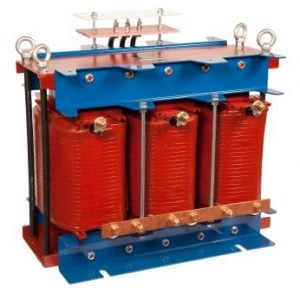
Aesthetically pleasing 250kVA custom-built transformer
Connection
A further factor to consider, in three-phase transformer specification, is whether a special connection is required. Phase windings can be connected internally in different configurations, dependent on the requirements of the transformer. Different combinations of winding connections will result in different phase angles between the voltages on the windings. The IEC categorises these distinctive winding configurations as vector groups. Delta, Star, and Zig-Zag are all examples of vector groups that may be required. These connection configurations offer special solutions to some complex technical requirements such as phase loading, earth grounding, harmonic suppression, and phase displacement.
Transformer Varieties
This article has predominantly focused on power transformers; however, there are many other varieties of transformer. Voltage transformers, autotransformers, variable autotransformers, V connected transformers, motor starting transformers, printed circuit board mounting transformers, and chassis mounted transformers are additional forms of transformer may be required. A specialist will give guidance as to which type of transformer is needed to meet the specified requirements. Experienced transformer manufacturers can normally produce other wound components such as chokes and reactors.
Summary
In summary, it vitally important to communicate with an experienced specialist especially in situations where there is even the slightest hint of ambiguity. Additionally, it is always advisable to acquire a second opinion to ensure the transformer has been designed accurately, and to optimum efficiency, for the required function and environment. It is the job of the specialist to request all of the necessary information from the customer and advise how this information can be obtained (should they be unfamiliar with the process). ETE have specialised in both the design and manufacture of transformers and wound components for over 30 years and consequently have designers with a vast amount of technical knowledge and expertise. ETE provide a customer focused approach and cater to the customers’ needs on an individual basis. The team are more than happy to guide the customer through the entire specification process (from initial enquiry to the final design of the product) and look to deliver the best performing product for optimal cost.
Tony Harper
Marketing

